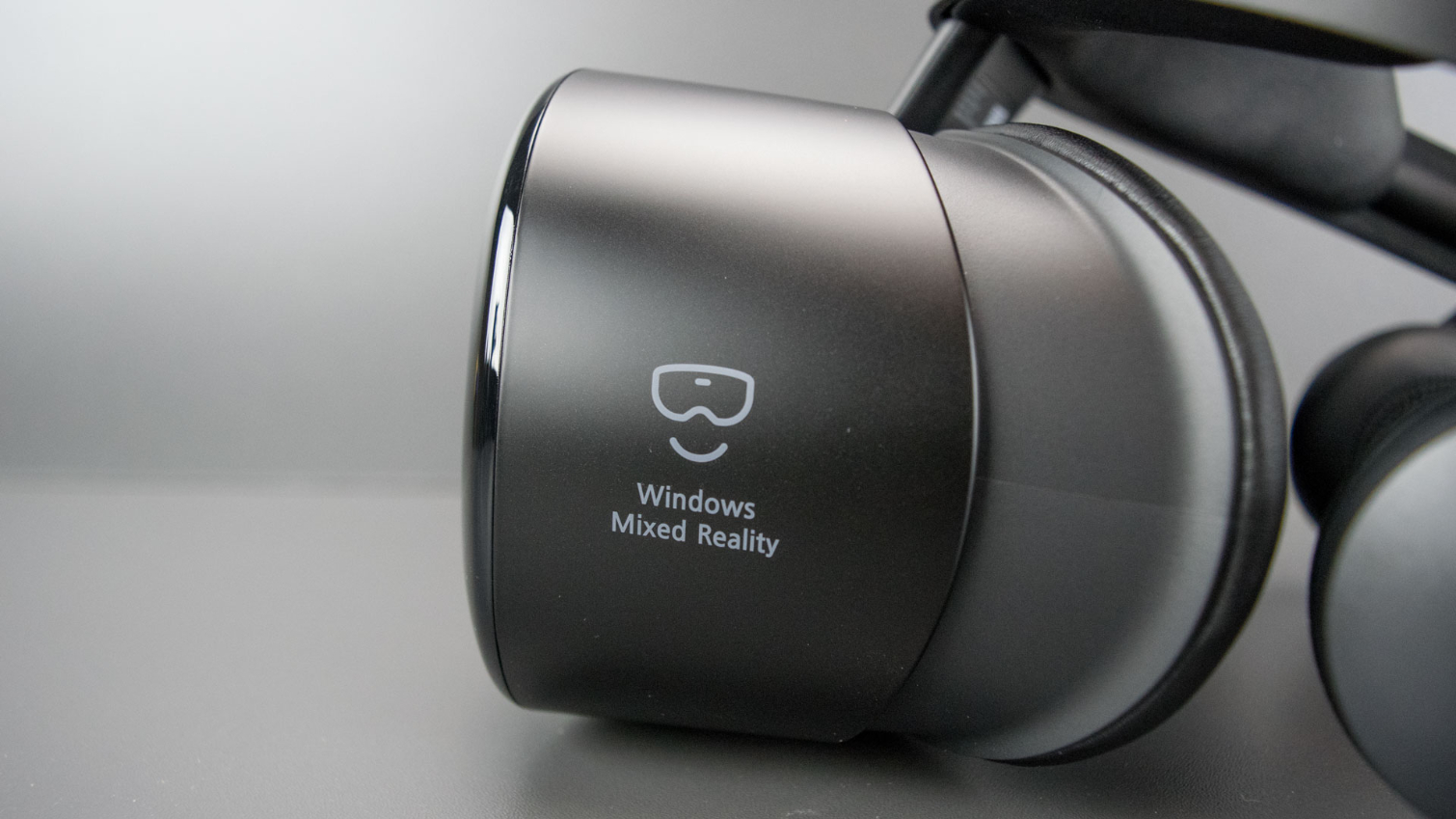Samsung HMD Odyssey Windows Mixed Reality Headset Review: MR Goes Premium
Why you can trust Tom's Hardware
An Introduction To Windows Mixed Reality
Samsung ships the Odyssey headset in a white box with a plastic form-fitted insert that holds the headset and controllers firmly in place. The headset and controllers come wrapped in foam bags for a little bit of added protection against scratches and dust. The box also includes a manual and warranty information booklet.
Aside from the transparent lenses and the Windows Mixed Reality logo, every inch of Samsung’s Odyssey headset is black. The faceplate is a reflective glossy plastic material, the body and head strap are matte plastic, and the foam padding is wrapped in a black faux-leather material.

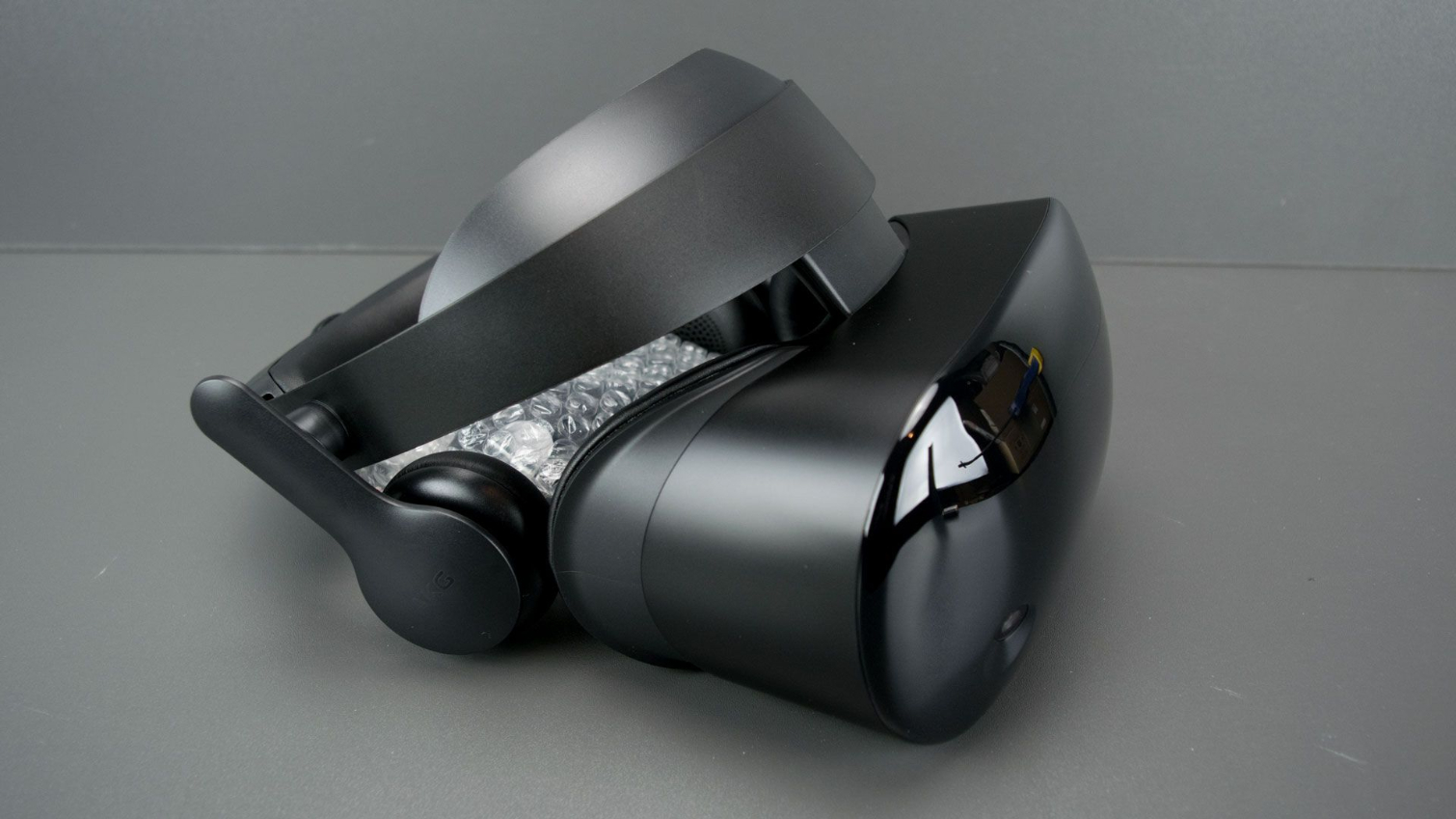

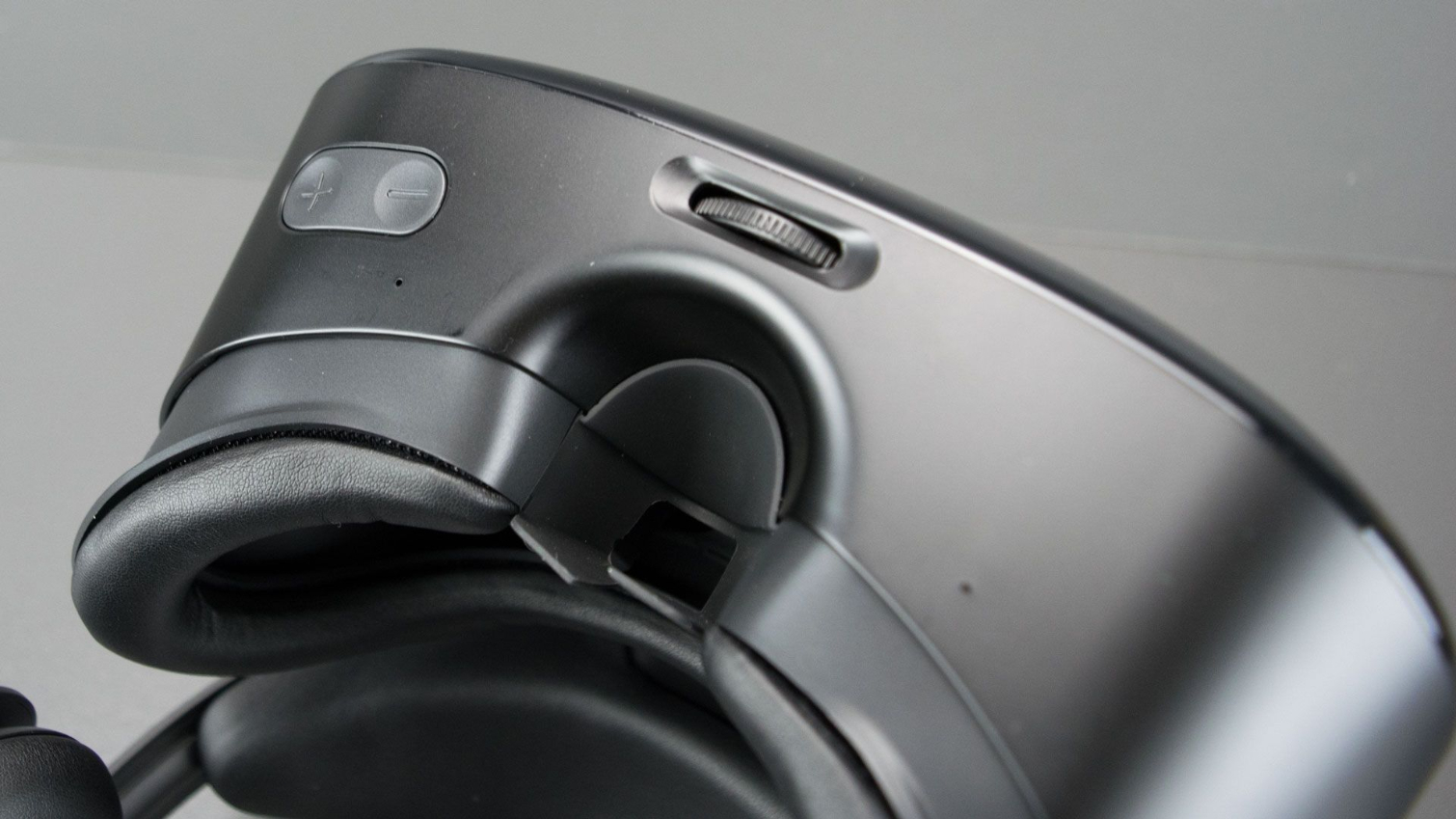
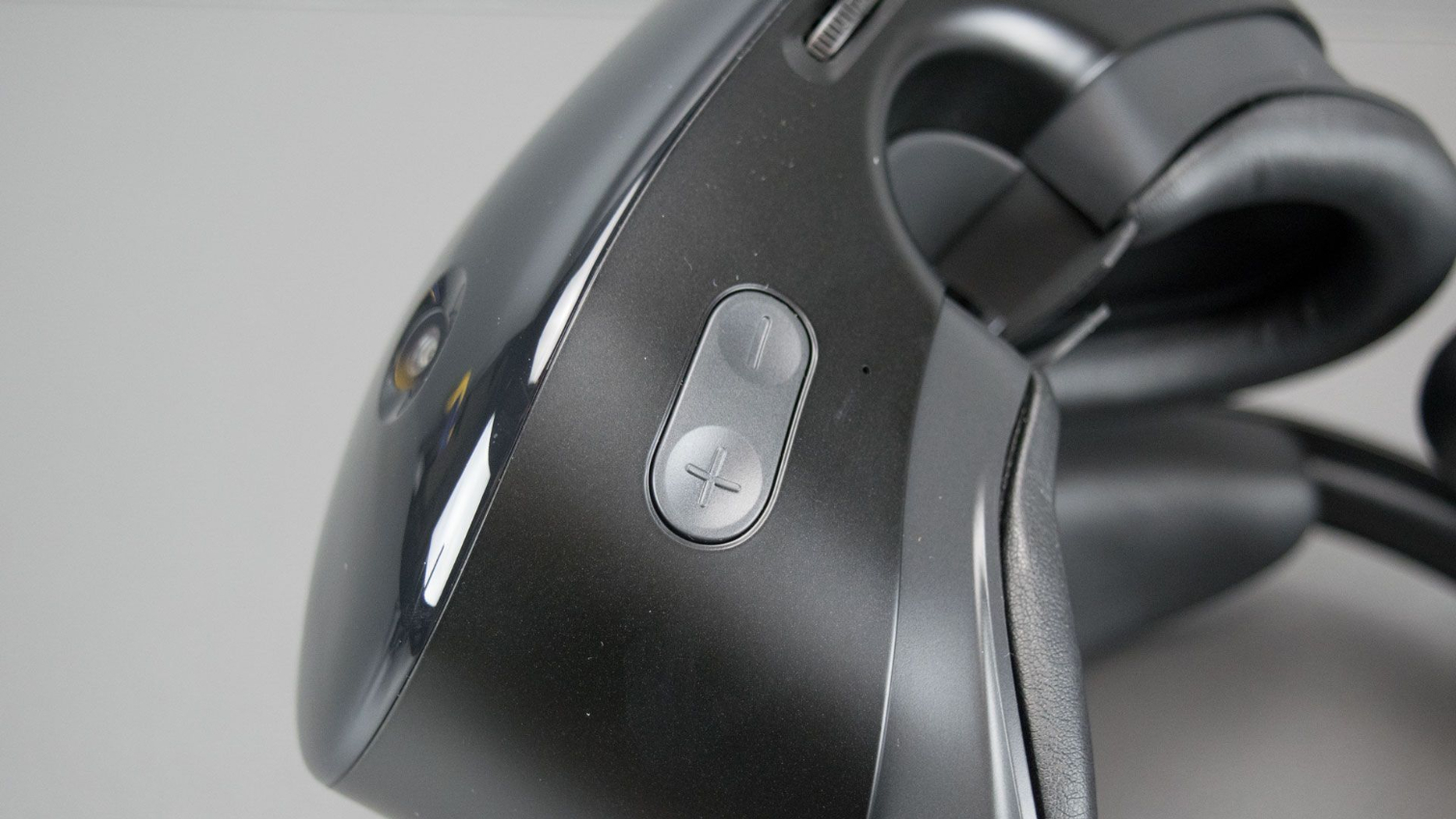
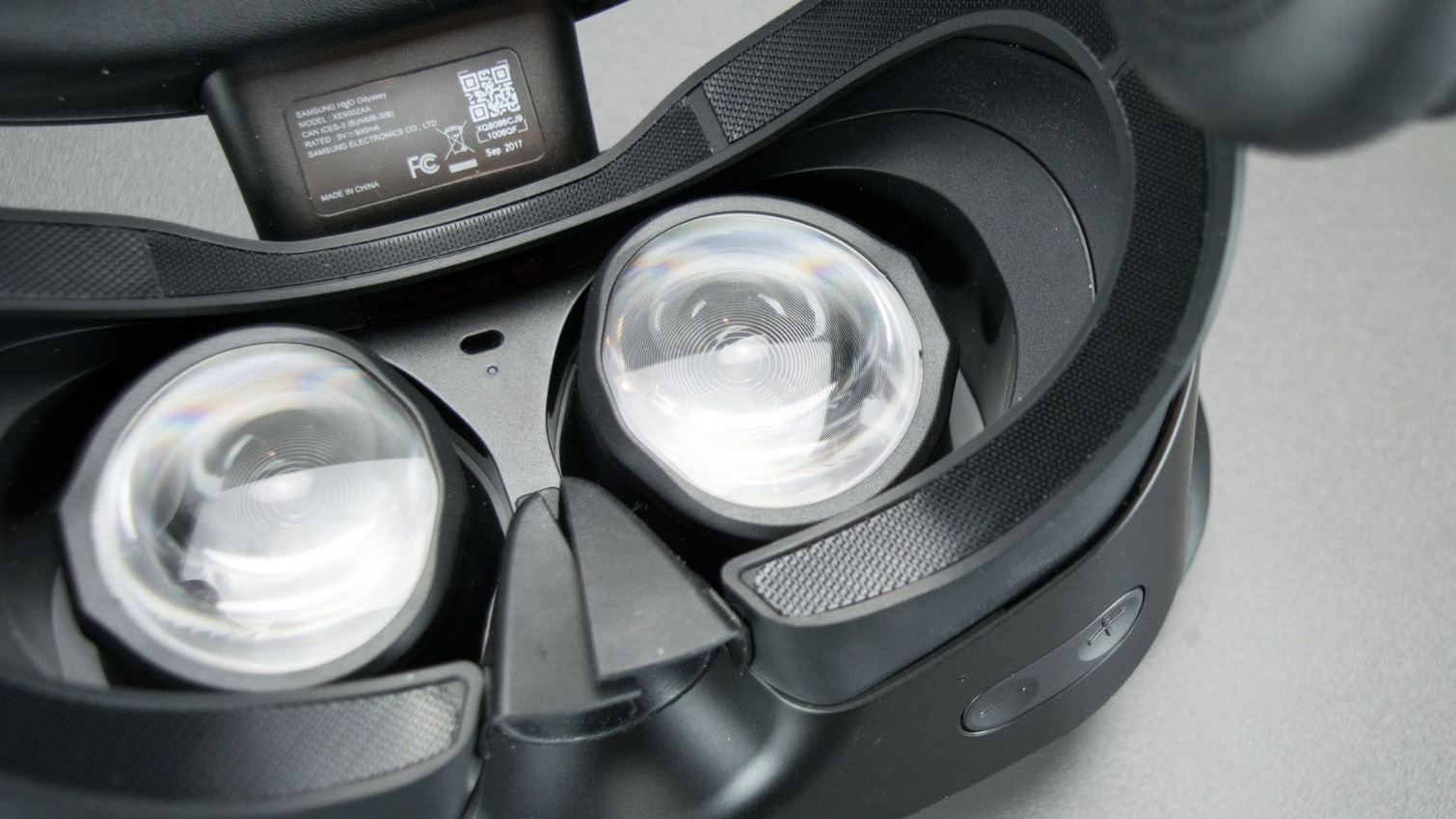
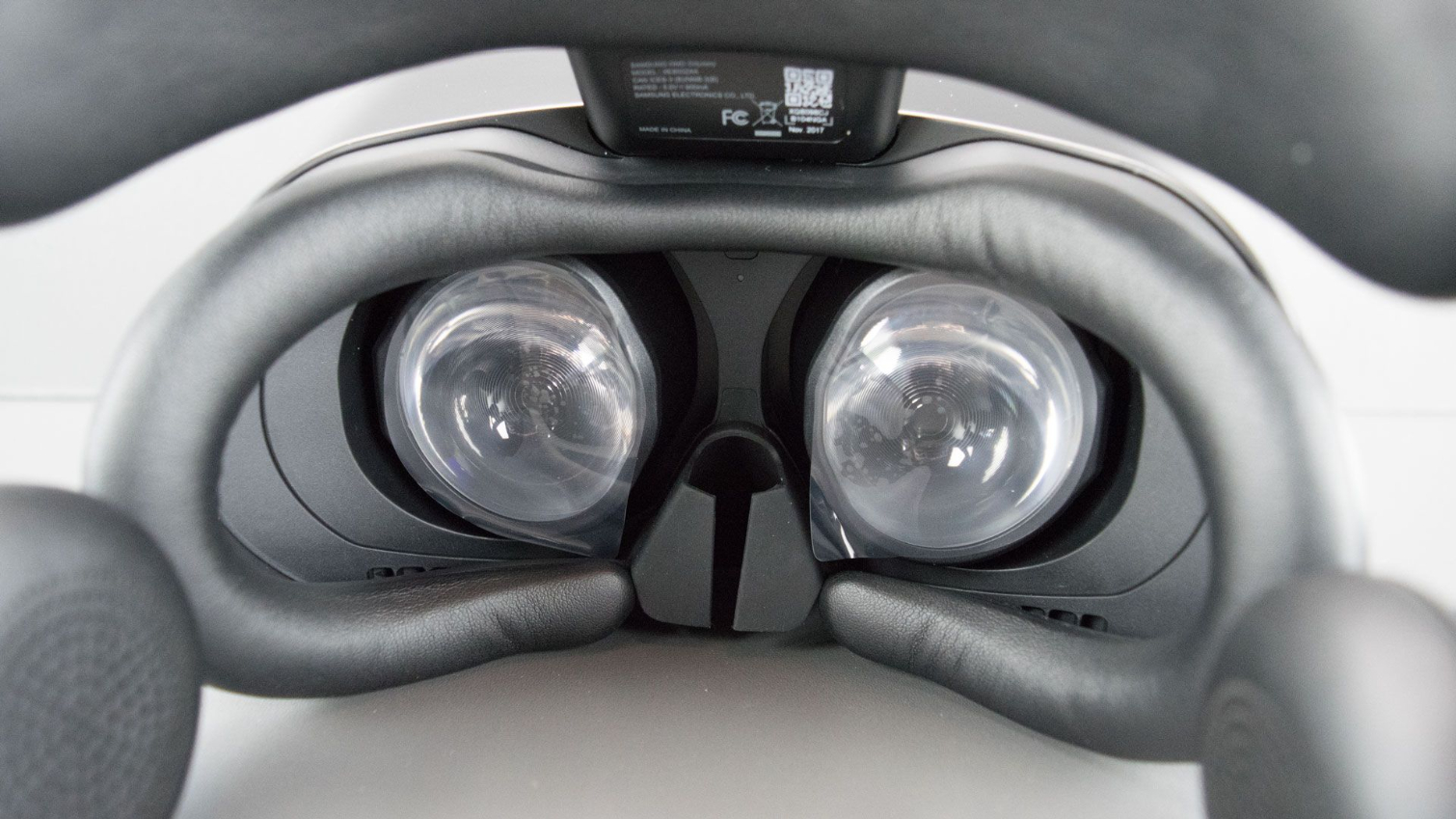
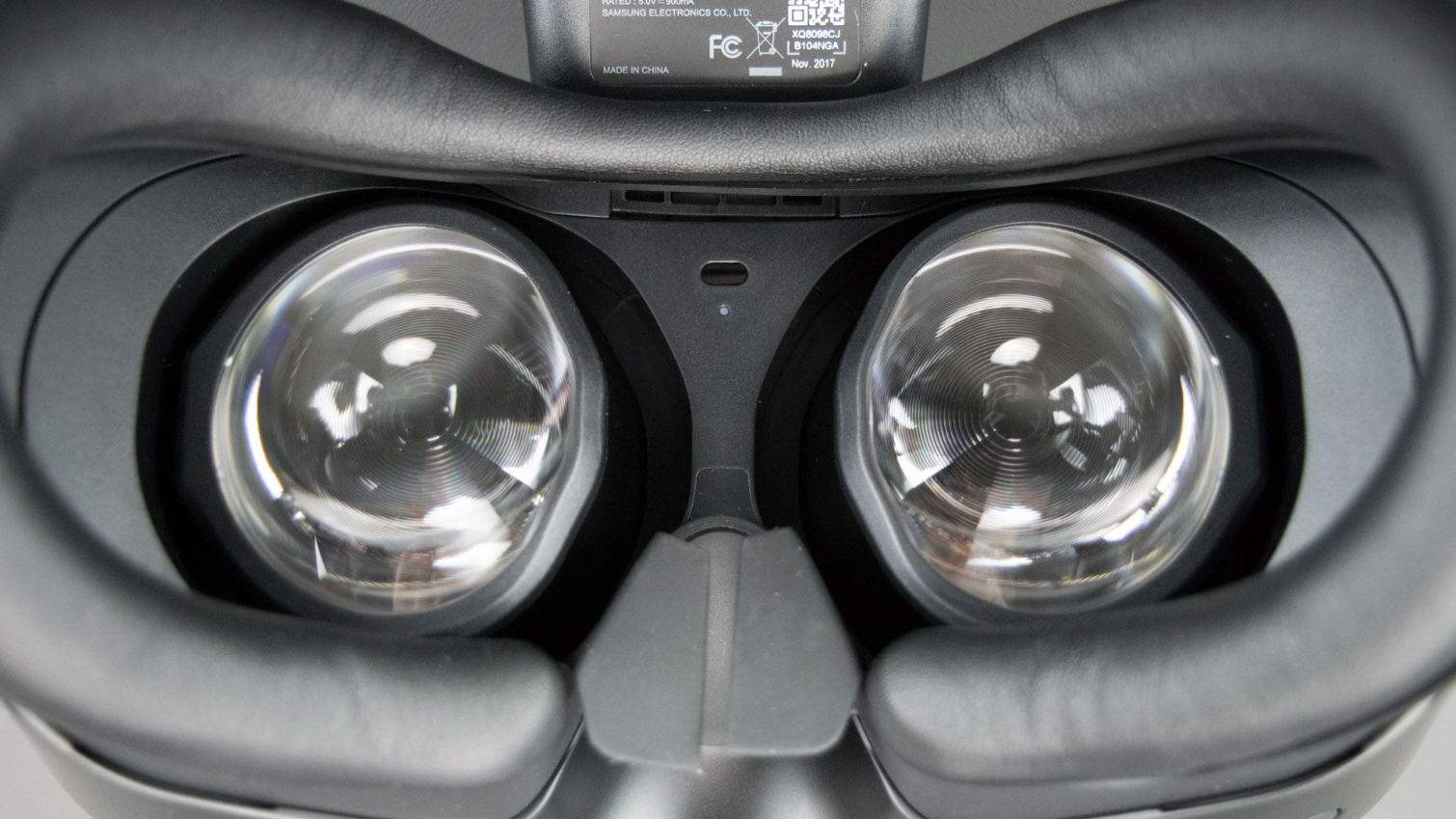
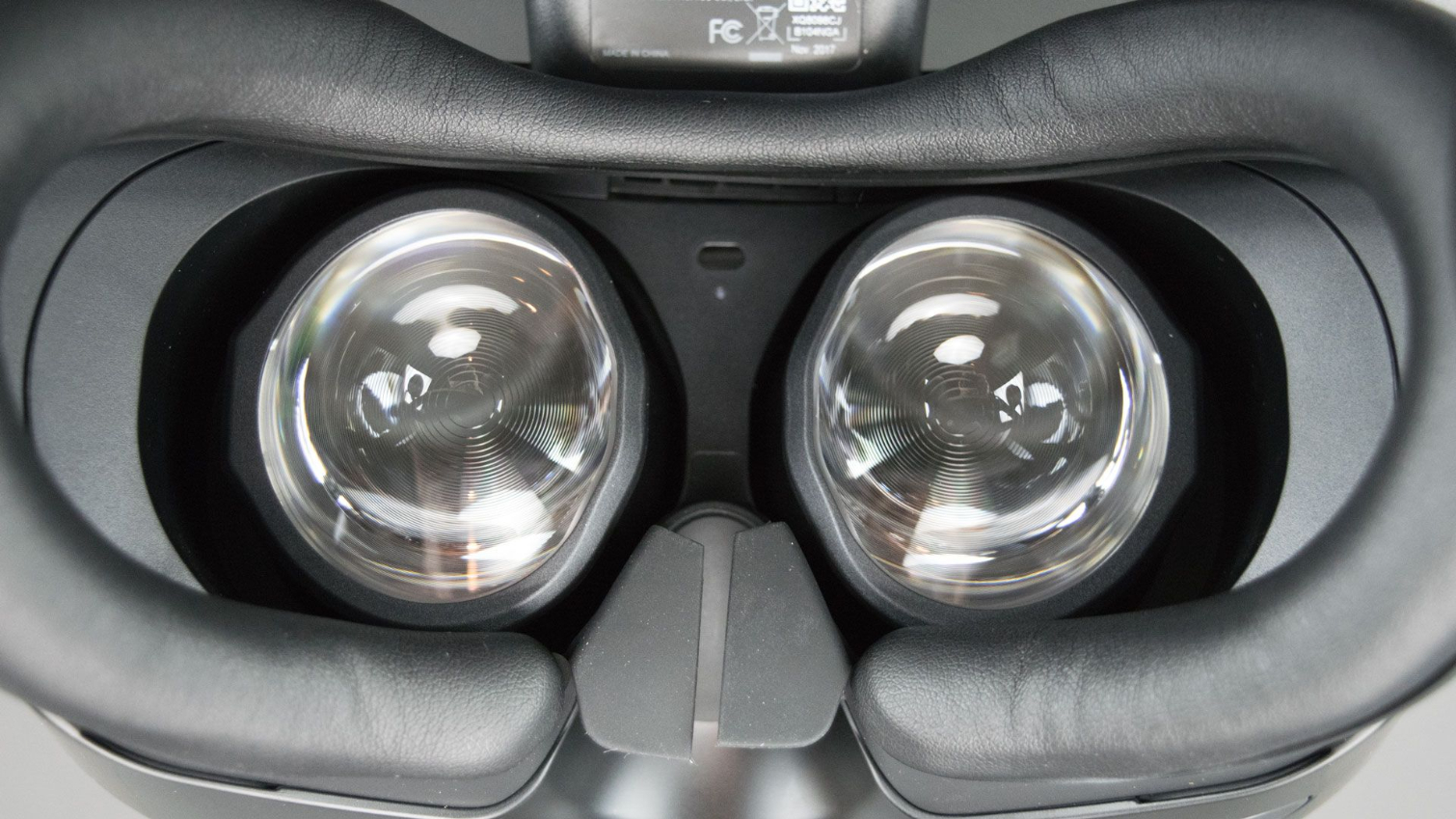
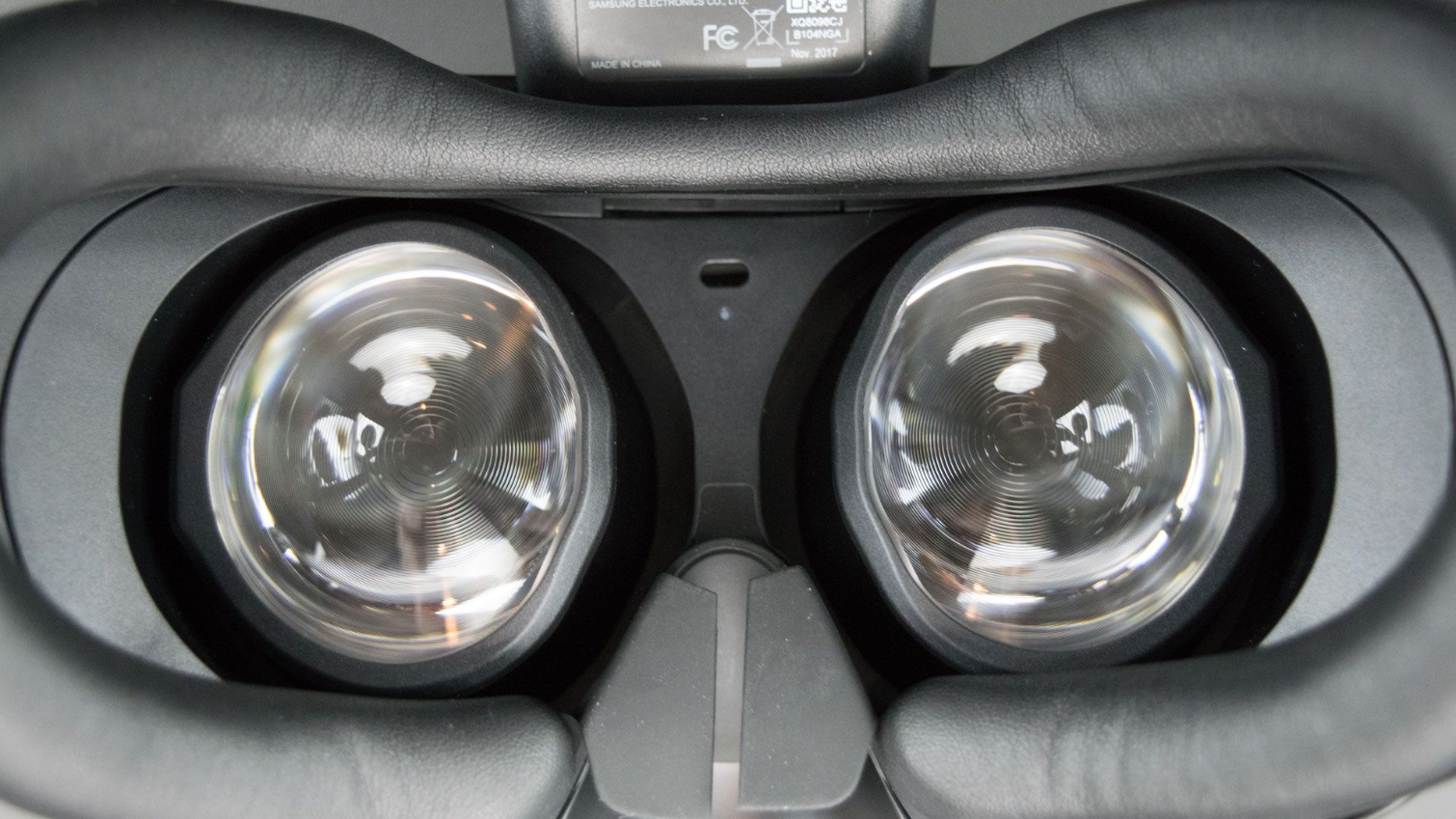
The Samsung Odyssey headset is also--so far at least--the biggest Windows MR HMD that we’ve encountered. It’s about the same size as the HTC Vive with the Deluxe Audio Head Strap (DAS) installed. The HMD body is comparable in width and depth to the Acer Windows Mixed Reality HMD, but the body of the Odyssey is nearly twice as tall as Acer’s headset. The large body and rigid head strap also tip the scales as the heaviest Mixed Reality headset that we’ve encountered, at 644g (1.42 pounds). The Vive with a DAS installed is roughly the same weight, though. So the Odyssey is alone in its bulkiness.
The large volume inside the visor houses the dual AMOLED panels and the mechanical bits for the adjustable interpupillary distance (IPD) lens system. Unlike the Acer and Lenovo Windows Mixed Reality HMDs, which feature fixed IPD lenses, Samsung’s headset allows you to set the width of the lenses to match the distance between your pupils. The Odyssey headset accommodates pupil spacing between 60mm and 72mm, which is relatively standard for HMDs with adjustable IPD. The Oculus Rift supports 58mm to 72mm adjustments, and the HTC Vive supports 60.8mm to 74.6mm. The fixed IPD of the Acer and Lenovo HMDs is 60mm. Samsung installed a dial on the bottom of the visor to adjust the lens spacing.
Personally, given that my IPD is 62, this reviewer found the adjustable IPD made a negligible difference. However, if your eyes are farther apart (or closer together) than the fixed 60mm of Acer and Lenovo’s headsets, you’ll definitely want to invest in a headset that lets you adjust the lenses to your eye spacing.
The taller 1440x1600-pixel panels in the Odyssey headset should theoretically produce a taller vertical field of view (FOV) than other HMDs, but none of the Windows MR HMD makers discloses a vertical FOV figure. The Samsung Odyssey boasts a 110-degree horizontal FOV, which is on par with the Lenovo Explorer and HTC Vive, and 10 degrees wider than the Acer Windows MR headset and the Oculus Rift.
Tracking System
Like all Windows Mixed Reality headsets, the front faceplate of the Odyssey headset features two cameras for room and controller tracking. The cameras are mounted on the lower half of the headset, approximately 1.5 inches from the other outer edges. Samsung oriented the cameras toward the floor and to either side at slight angles to maximize the volume that they can monitor.
Get Tom's Hardware's best news and in-depth reviews, straight to your inbox.
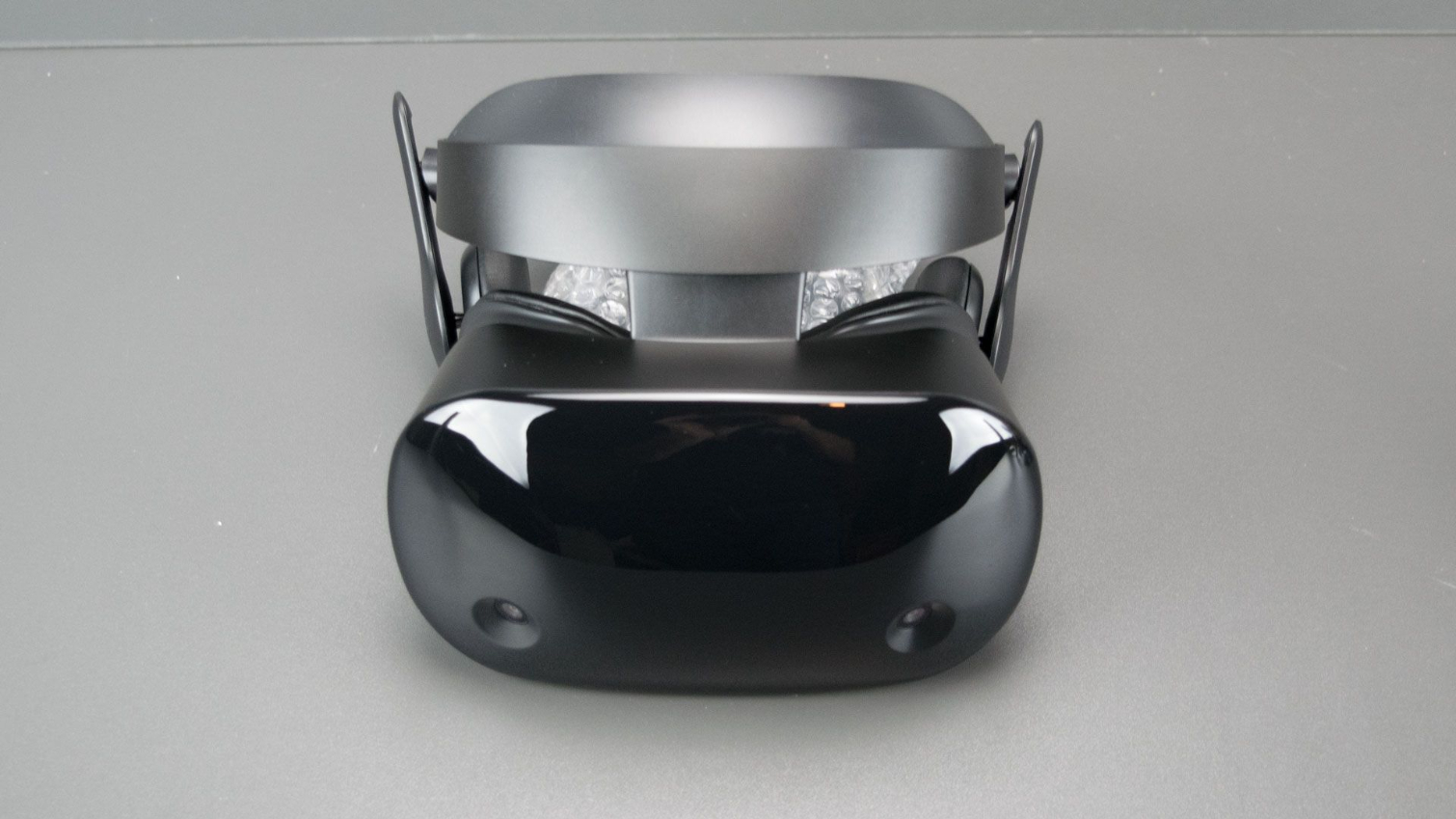
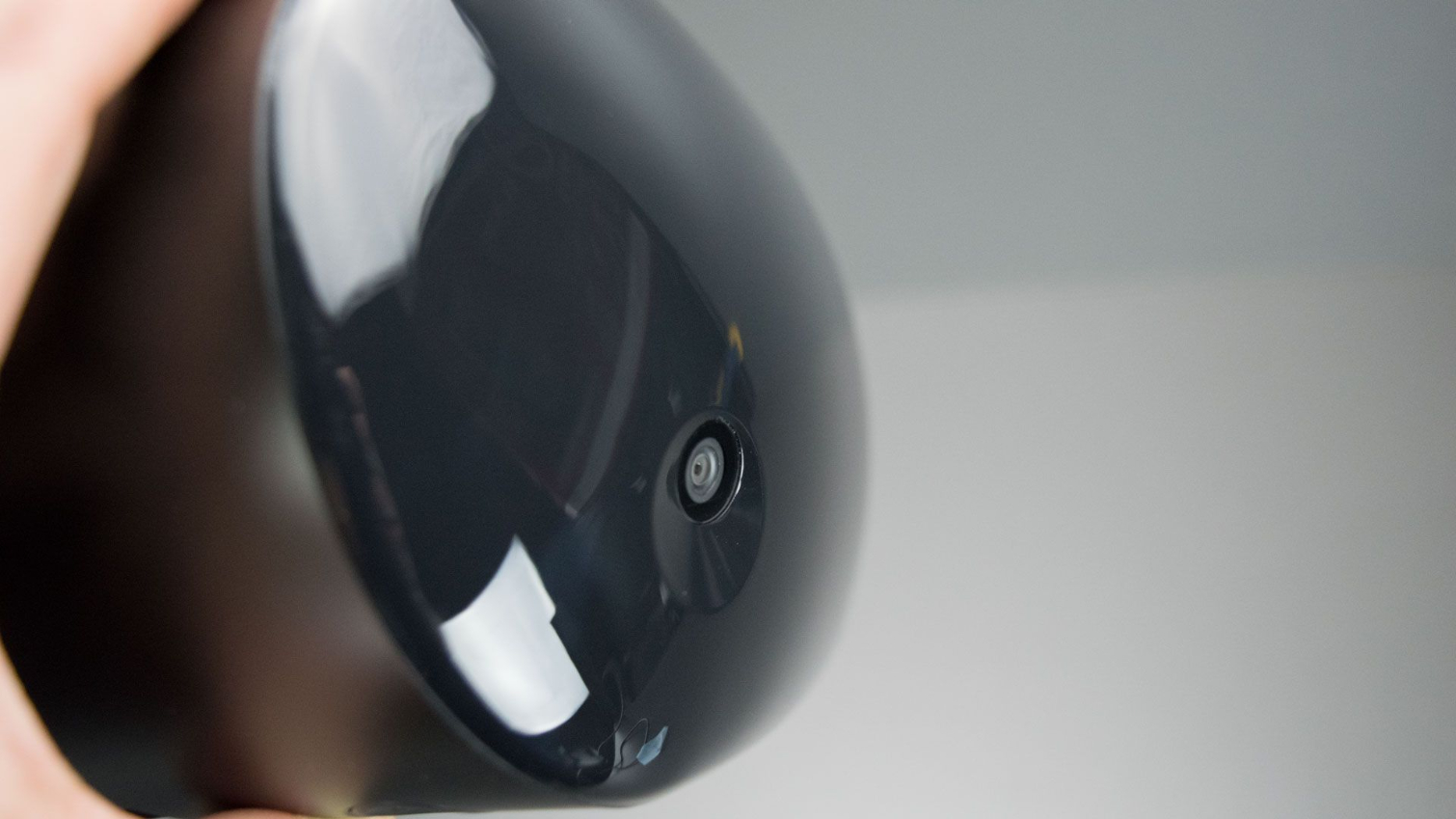
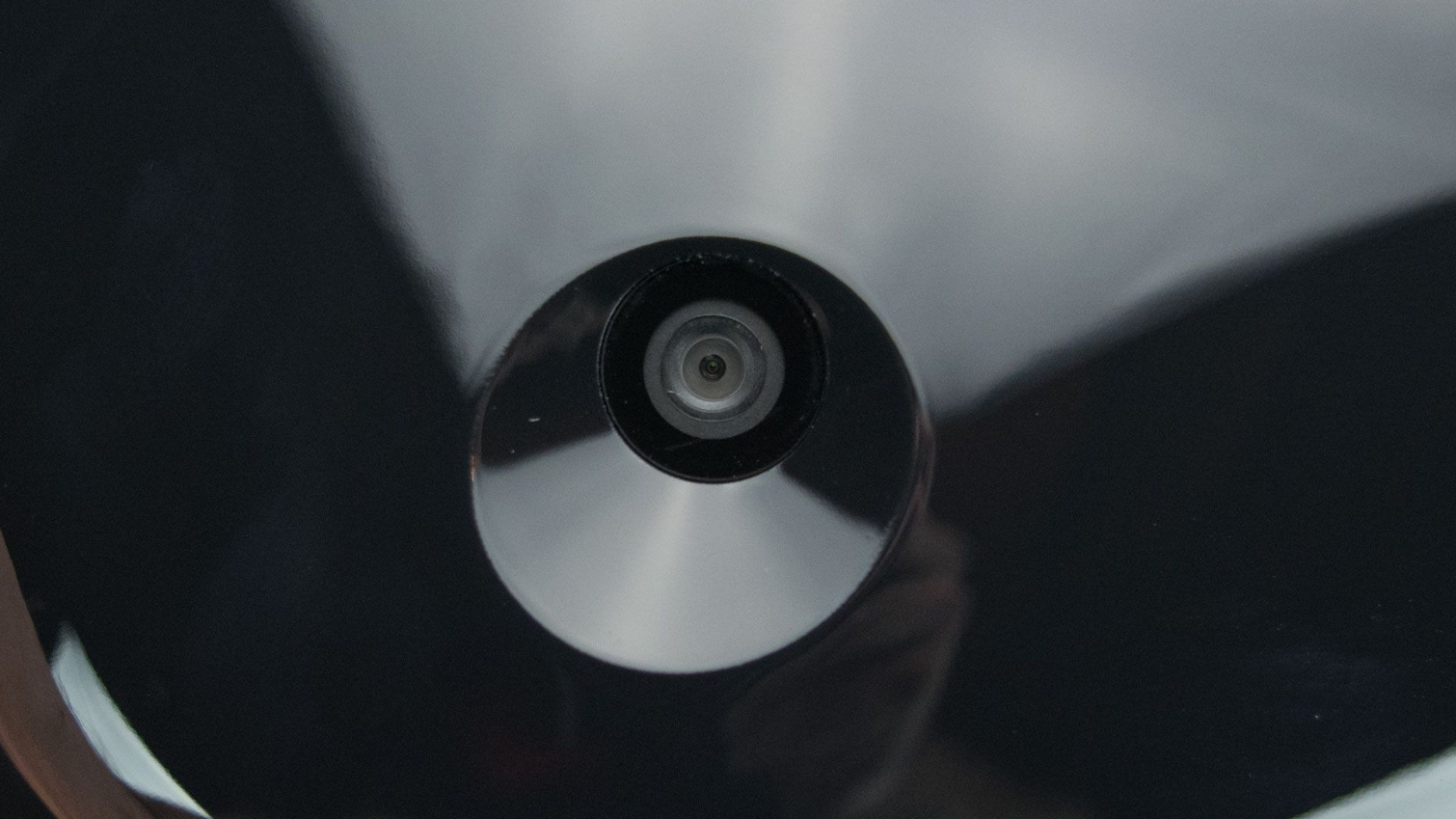
Acer and Lenovo both installed the camera mounts in plastic housings that protrude from the faces of their headsets. The Samsung Odyssey has a beveled faceplate with embedded cameras, which makes for a sleeker appearance. It would be hard to quantify how resilient that design is without risking damage to our test equipment, but we believe that Samsung’s design would hold up better to bumps and drops. Also, the camera housing on Acer's and Lenovo’s headsets are separate pieces, which could, in theory, break if treated poorly. The faceplate on Samsung’s headset is all one piece, so you would have to drop it quite hard to break it apart.
That's Not A Hinge
The Acer and Lenovo Windows MR headsets both feature flip visors, which we enjoy for the convenience, but we worry that their hinges might fail prematurely. Samsung avoided running into hinge-related warranty issues by not including a hinge at all. In place of the hinge, Samsung installed a spring-loaded relief system that enables you to pull the visor away from your face if you need to see your surroundings. The PlayStation VR HMD has a similar mechanism, but Samsung’s design doesn’t have a release button like Sony’s.
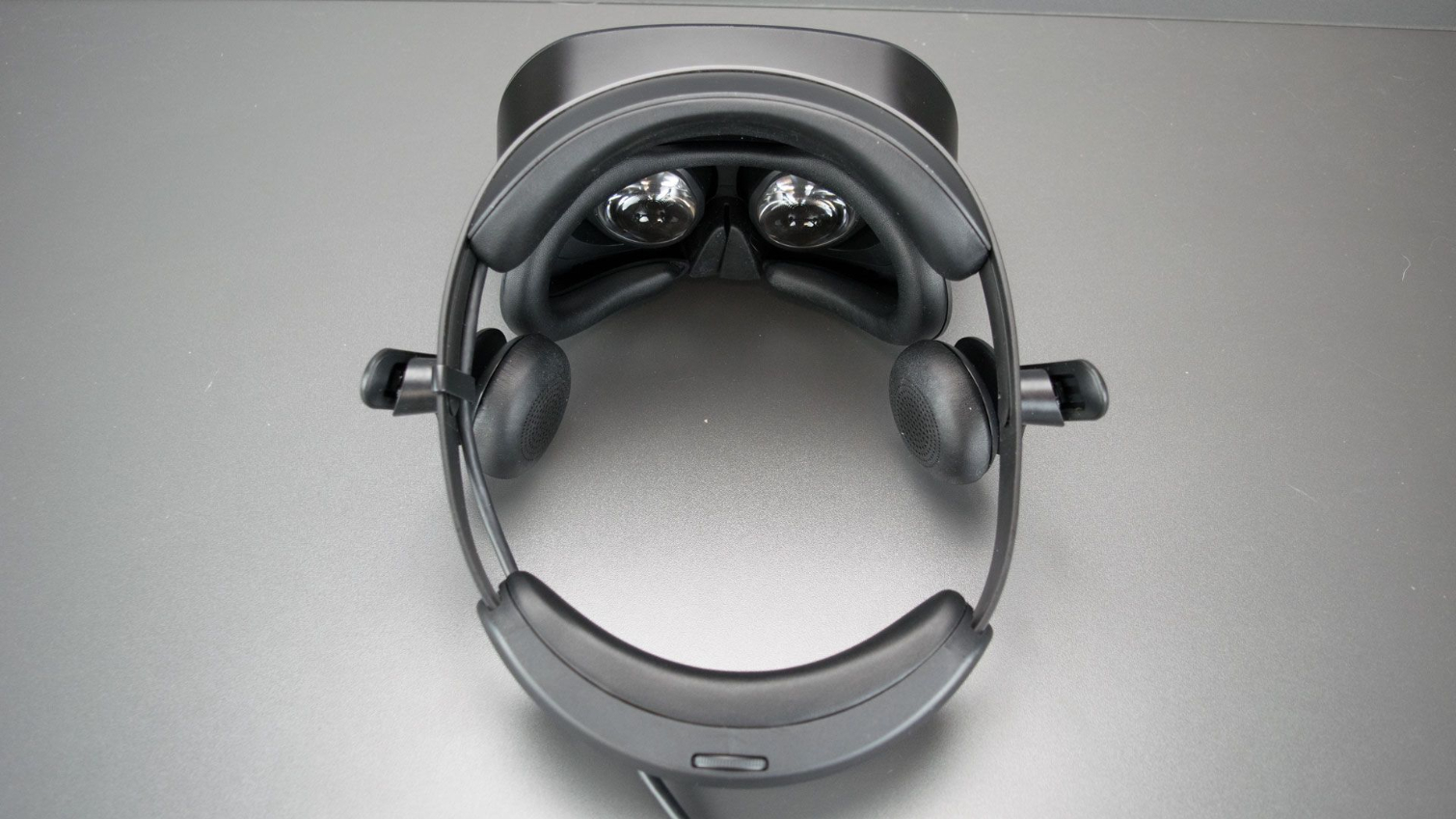
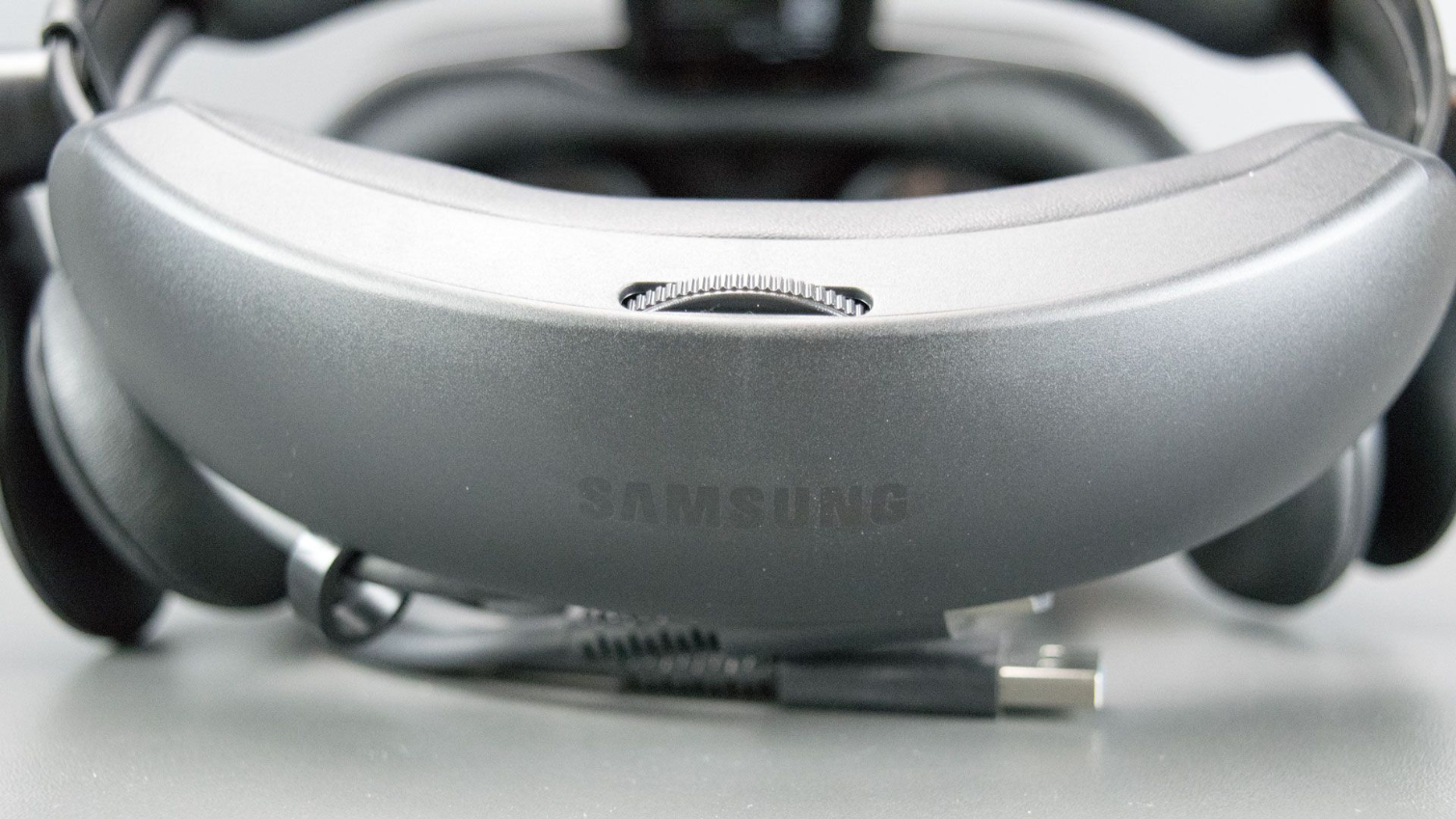
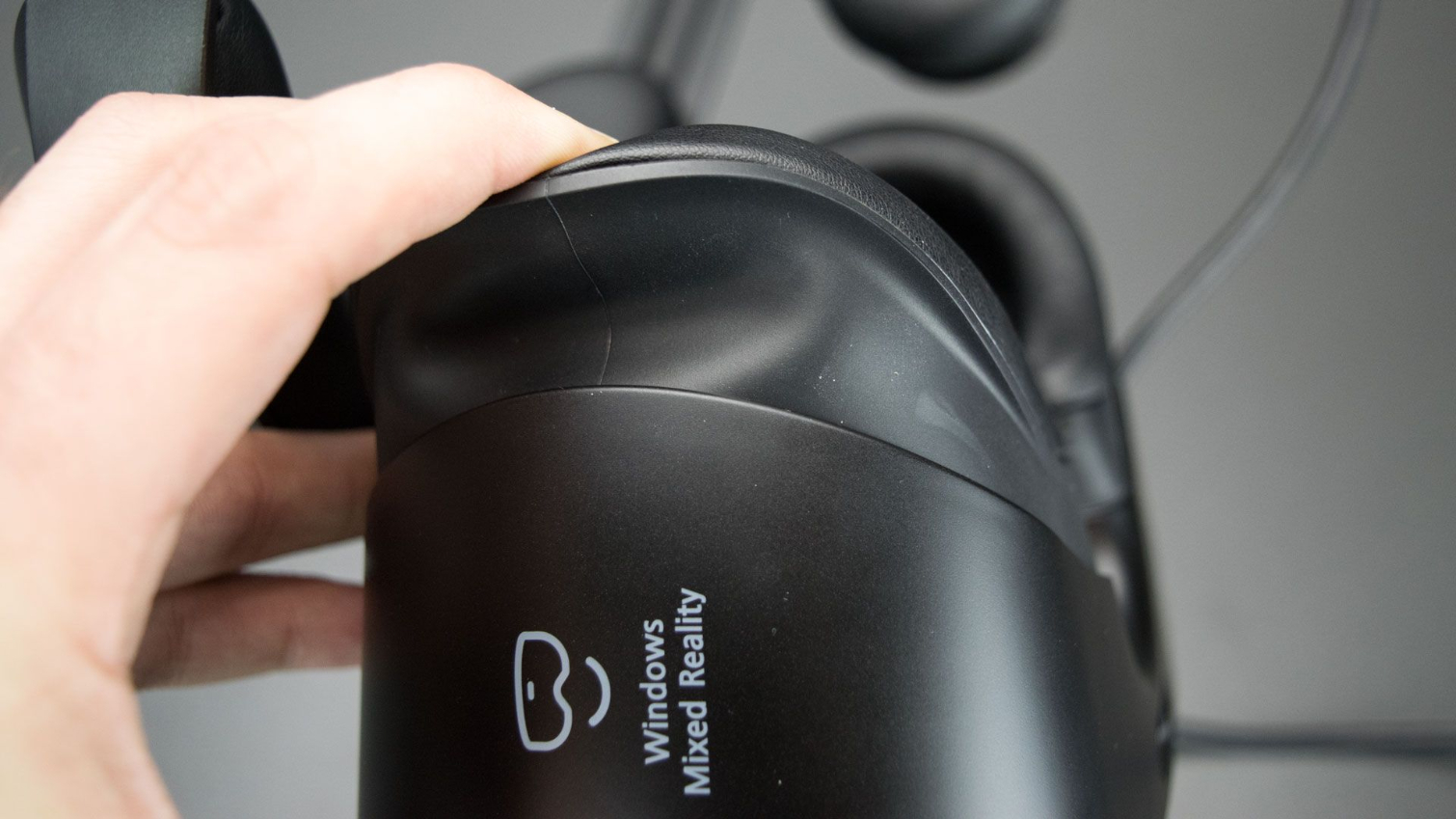


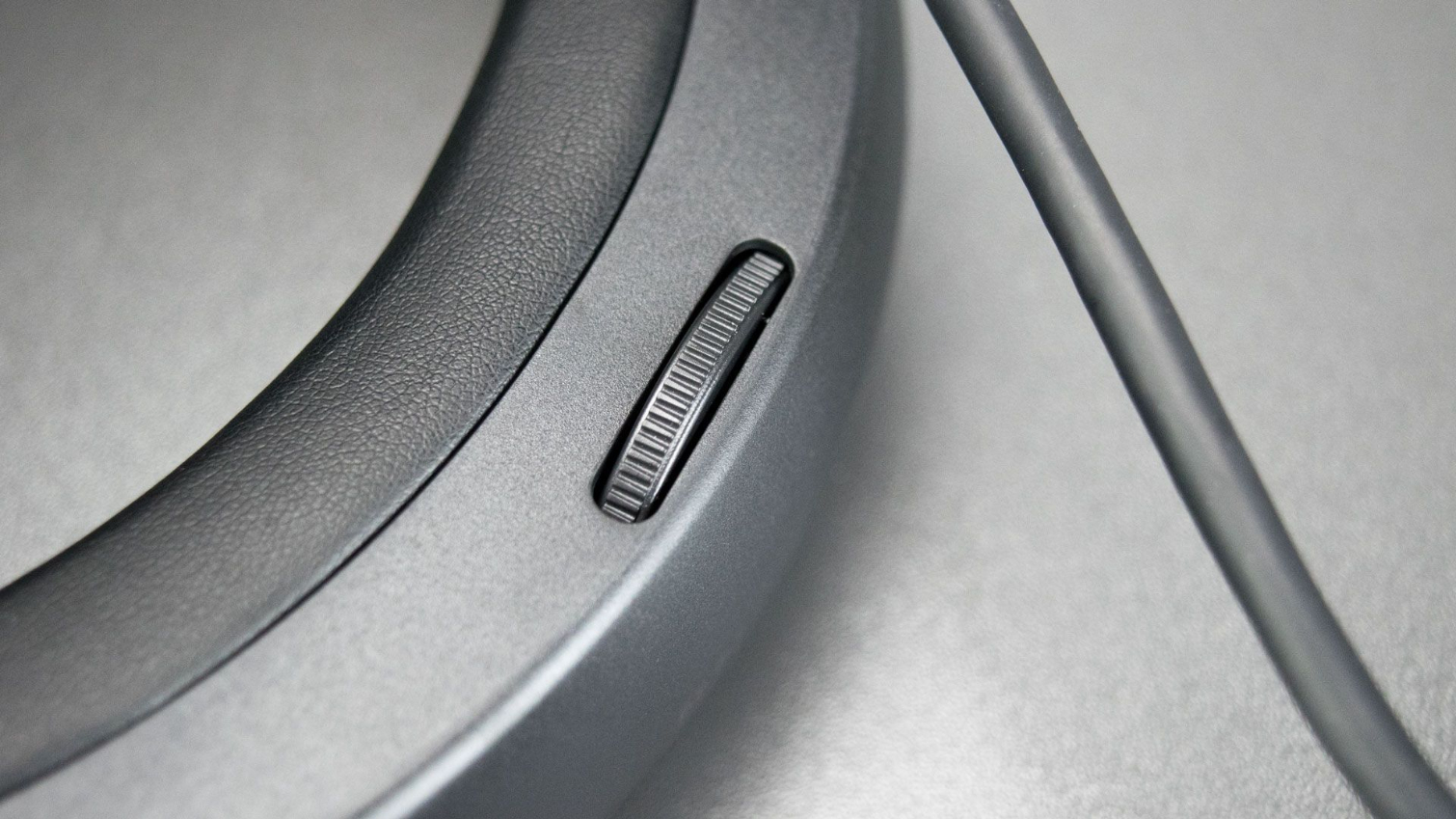
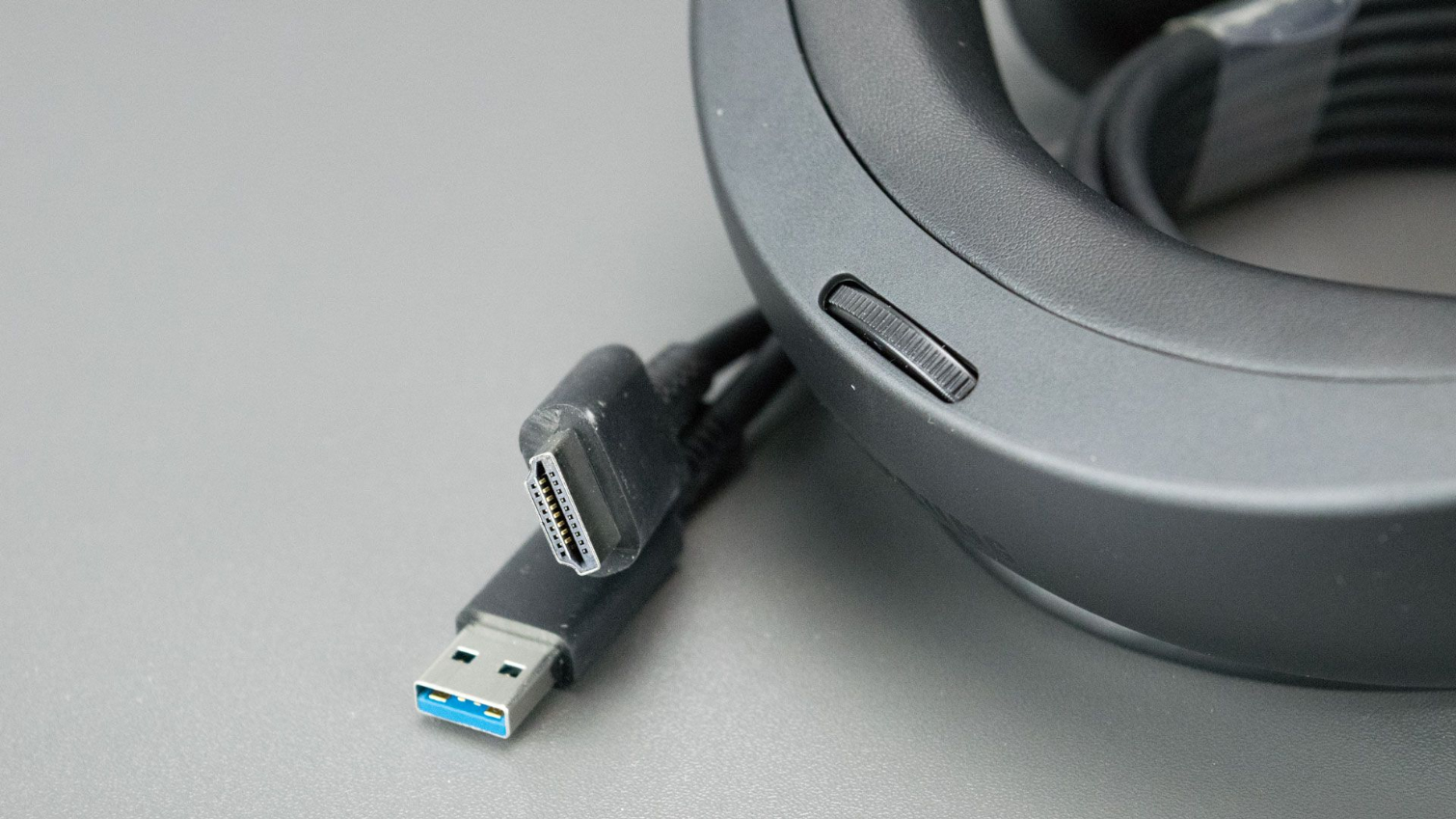
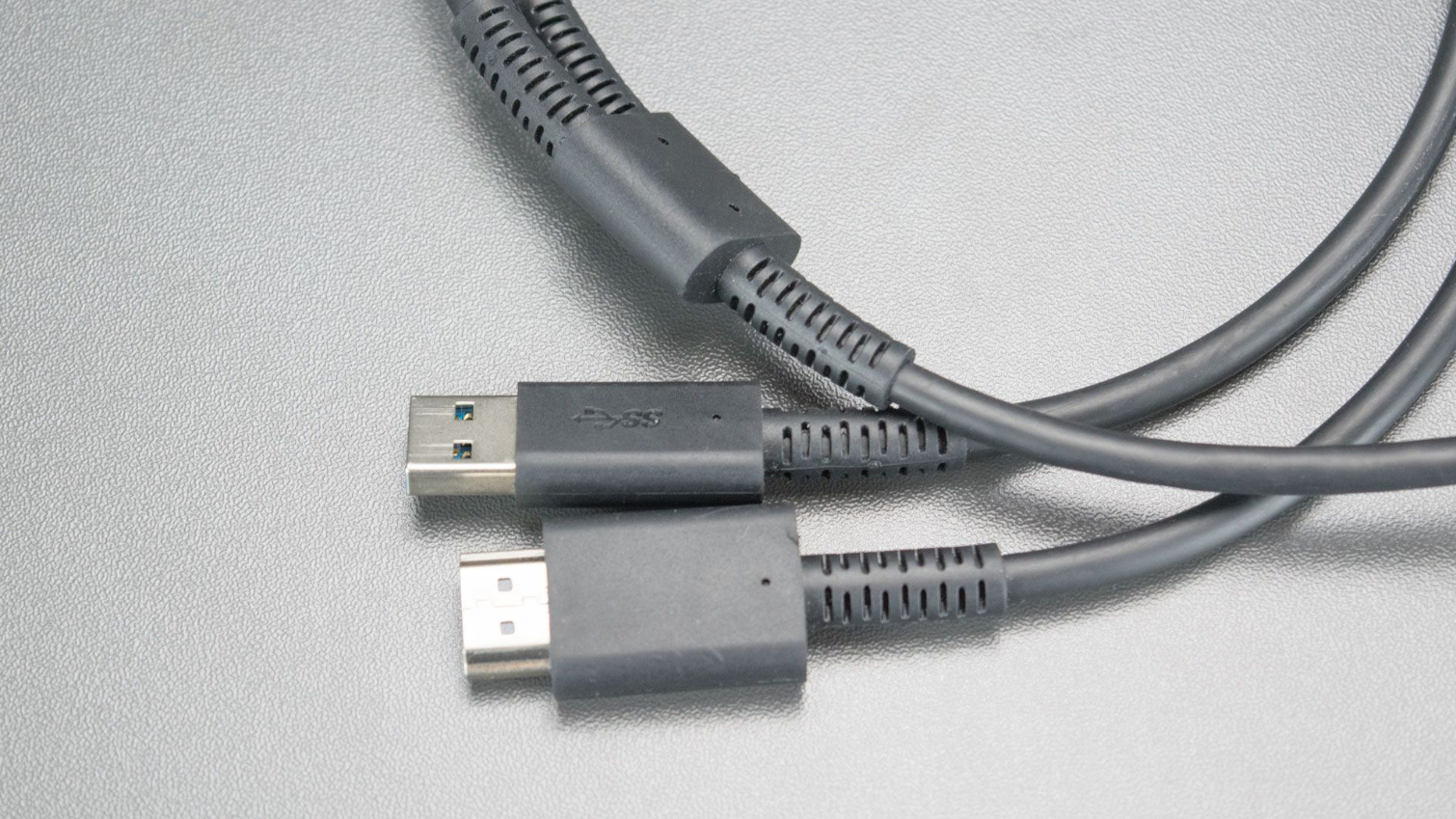
The Samsung Odyssey headset features a rigid halo-style head strap system with a mechanical adjustment. This seems to be the standard solution for Windows Mixed Reality headsets. The forehead section of the head strap features a large cushion that helps distribute the weight of the HMD evenly. The adjustment mechanism is a dial located on the rear section of the head strap. Turning the dial left to extends the head band, while turning it right to tightens it. When you tighten the dial, you’ll hear a satisfying ratcheting sound. When you loosen it, you’ll hear a single click, and then it should rotate without resistance. The mechanism here doesn't include a quick-release button to release the tension.
Every HMD that we’ve tested so far includes removable and replaceable foam face cushions, and the Samsung Odyssey is no exception. However, most of the time, the cushions are mounted directly to the rigid frame of the HMD. Samsung’s design features an extra level of comfort in the form of a rubber gasket between the plastic body and the foam cushion. The rubber gasket is soft and malleable, which should theoretically allow the headset to fit comfortably on practically anyone’s face. That said, in practice the visor is mounted too far out from the headband to make the rubber gasket matter at all.
When we put the Odyssey on, the face cushion barely touched our cheeks. As a result, we noticed a little bit of light bleed from the sides. Samsung’s product designers had the forethought to include a pair of rubber flaps to keep the light from coming in around your nose, but they failed to design a system that pulls the visor snug to your face. We would prefer a snug fit on our cheeks and no flaps on our nose in an HMD that lacks a flip visor. We often use the nose gap in our Rift as a quick-and-dirty way to see the real world when we need to reach for our keyboard or an un-tracked controller. To see our surroundings while wearing the Odyssey, we had to pull the visor away from our face with the relief system.
Integrated Audio System
When Oculus released the Rift, we learned first-hand the benefit of integrated audio on a VR headset. With built-in speakers, you don’t need to juggle an extra device on your head, and you have one less cable to tangle around yourself. And a built-in microphone ensures that you always have access to voice communication.
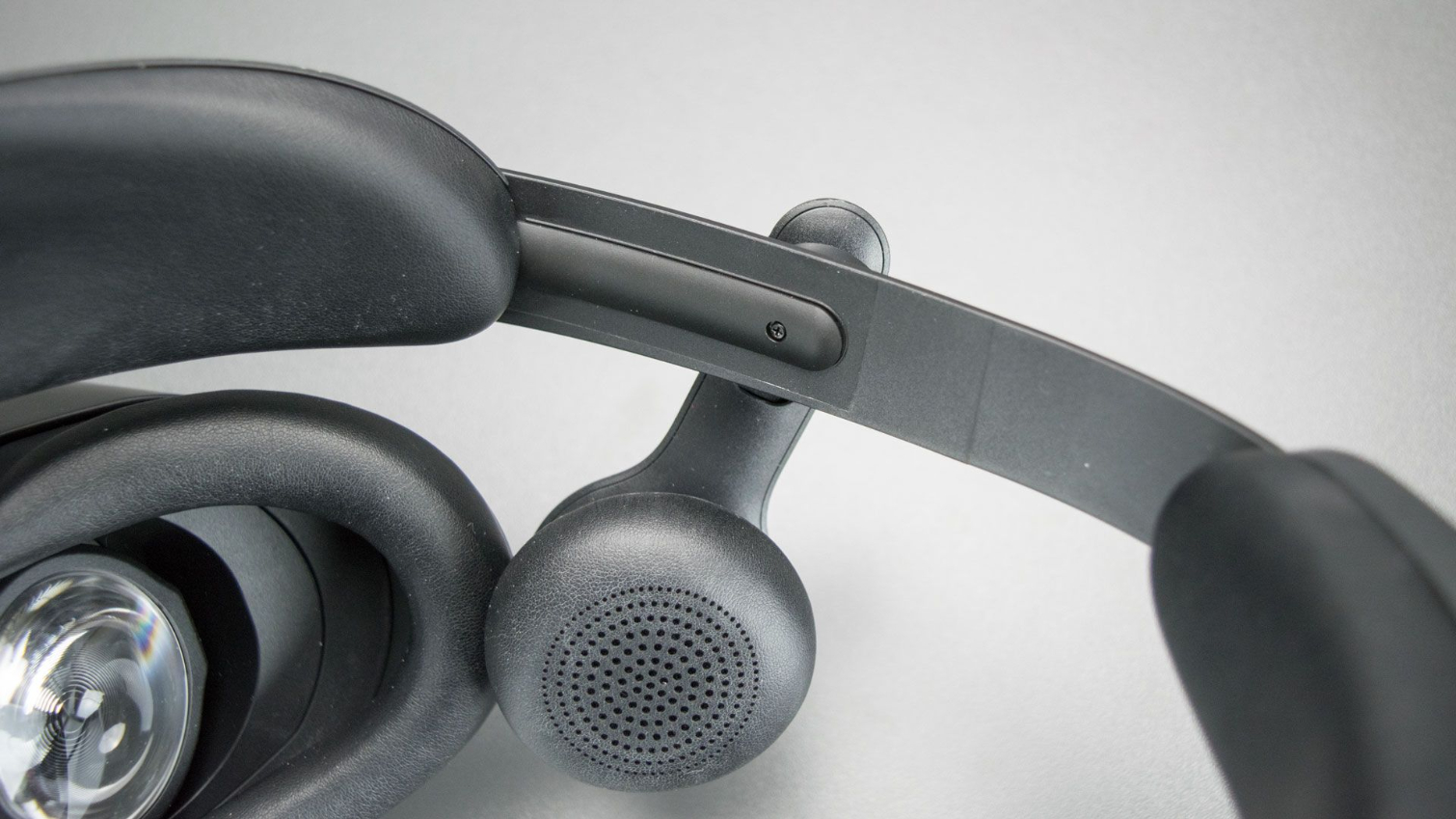
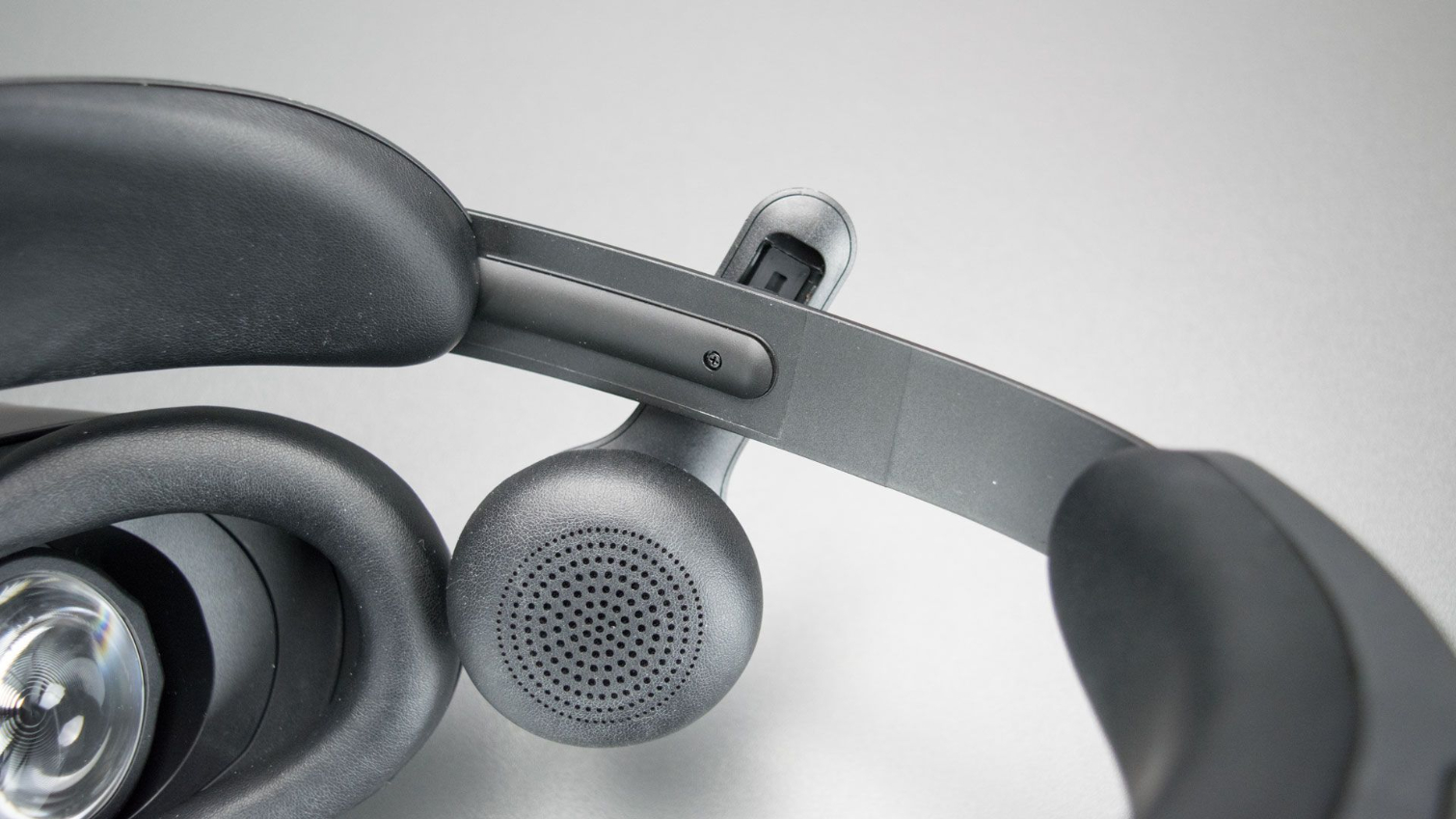
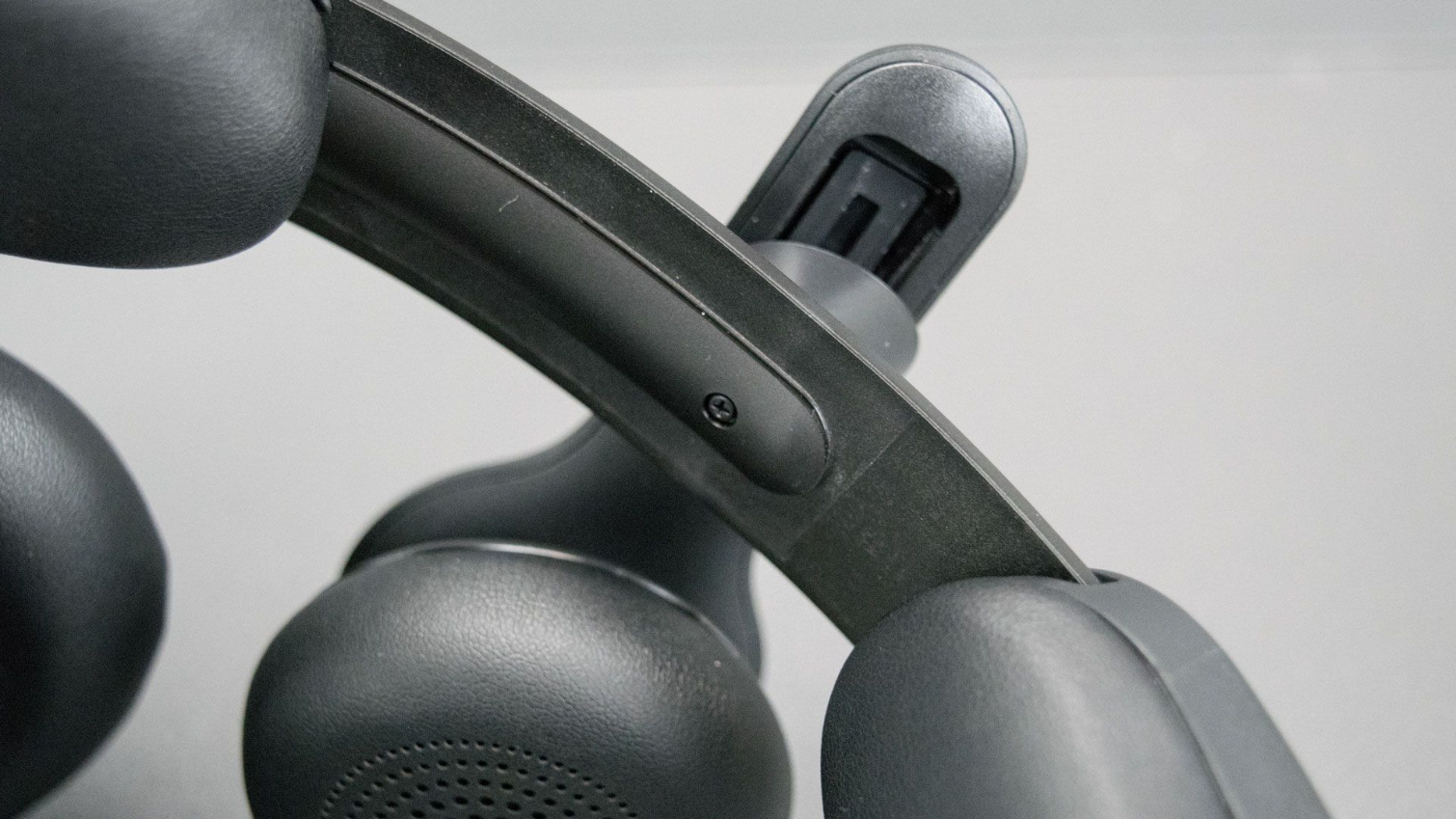
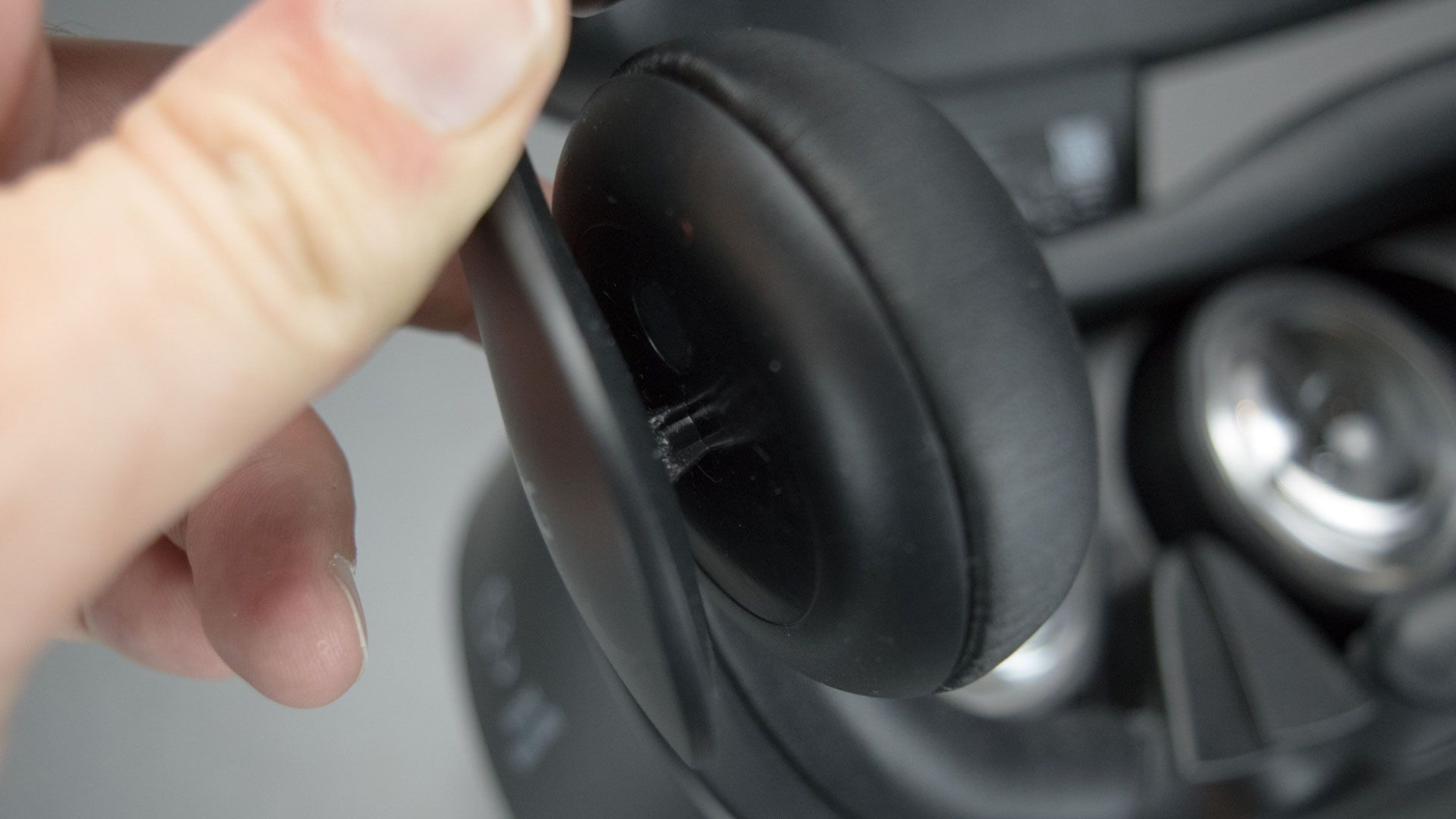
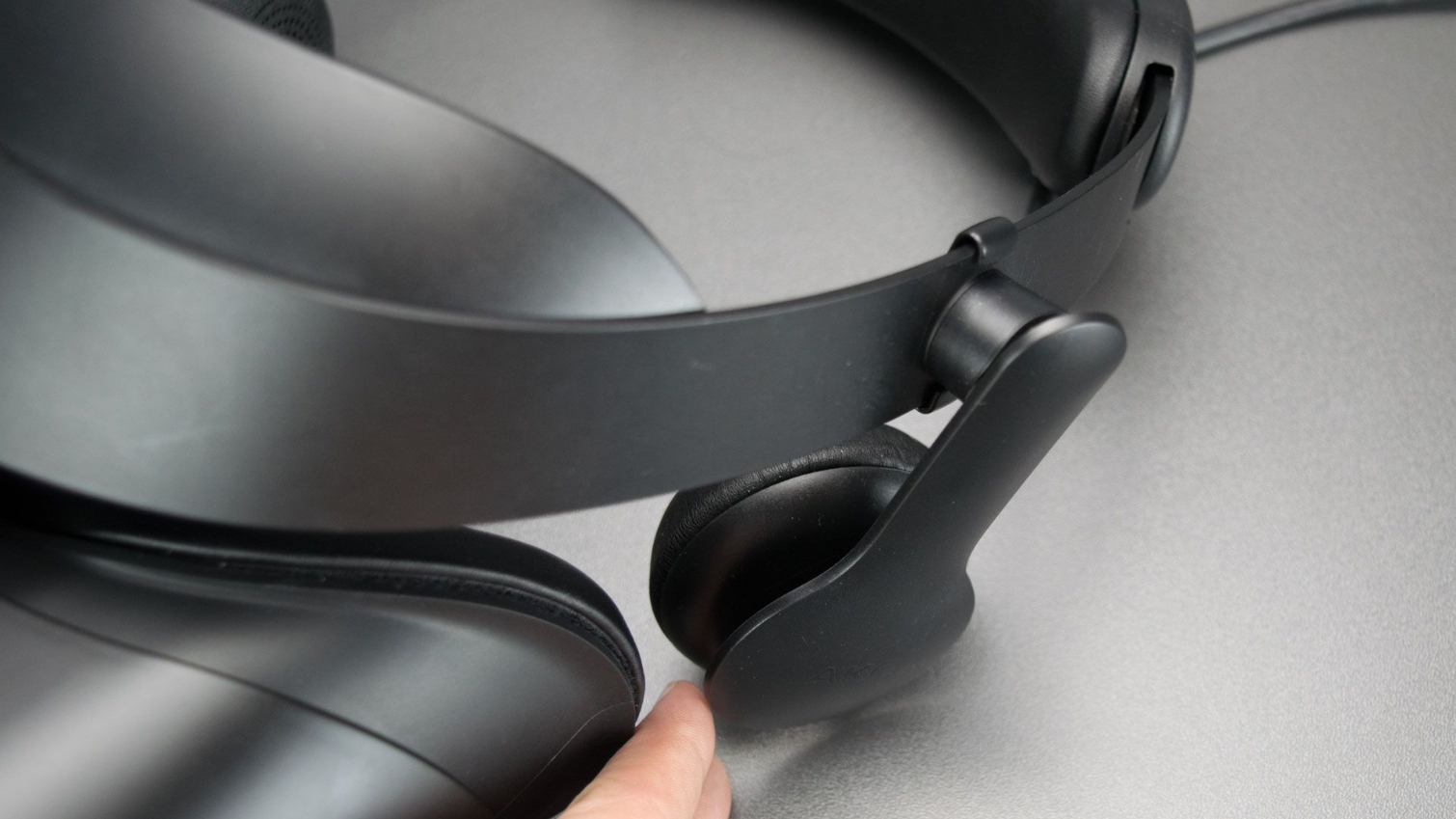
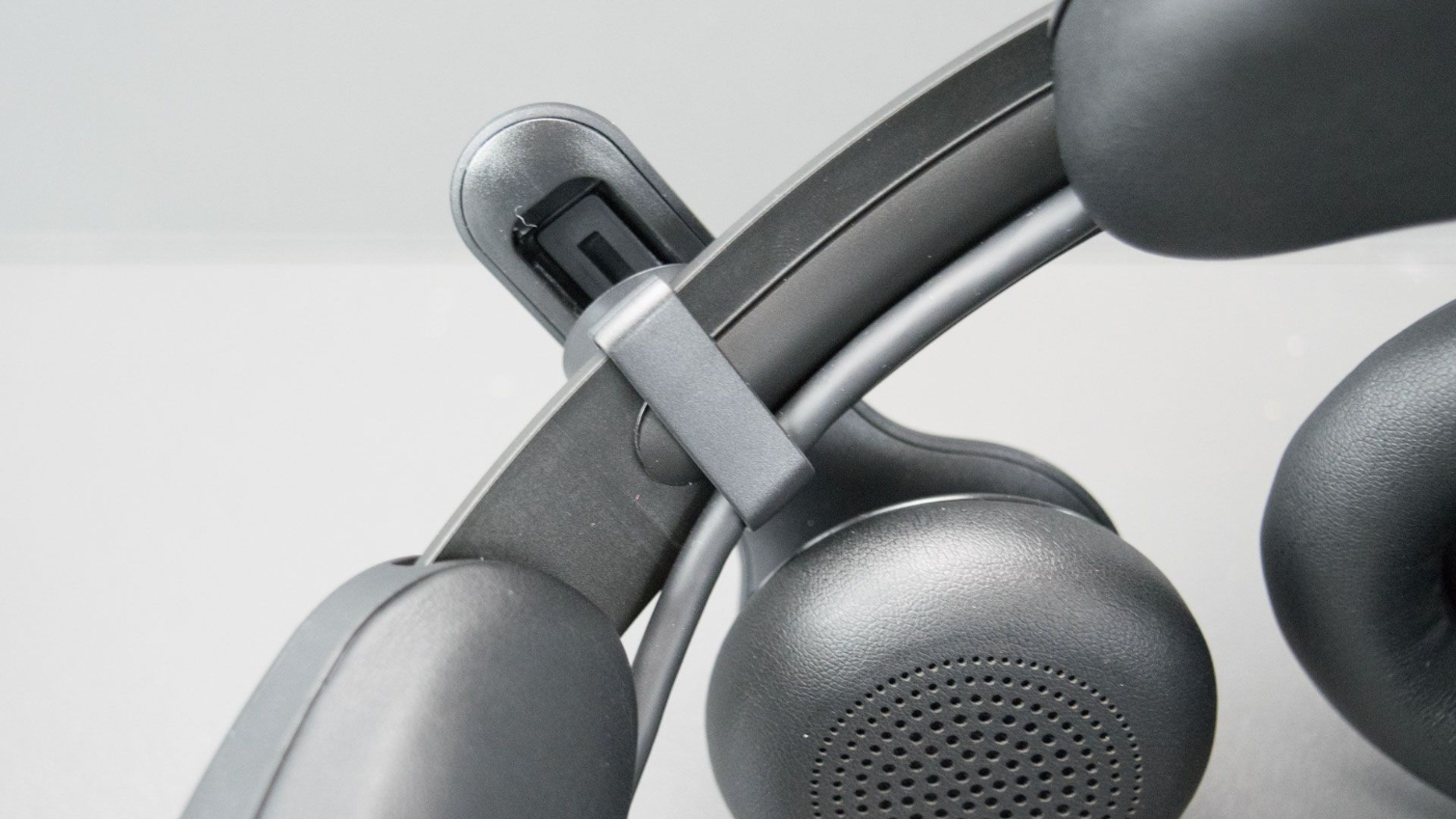
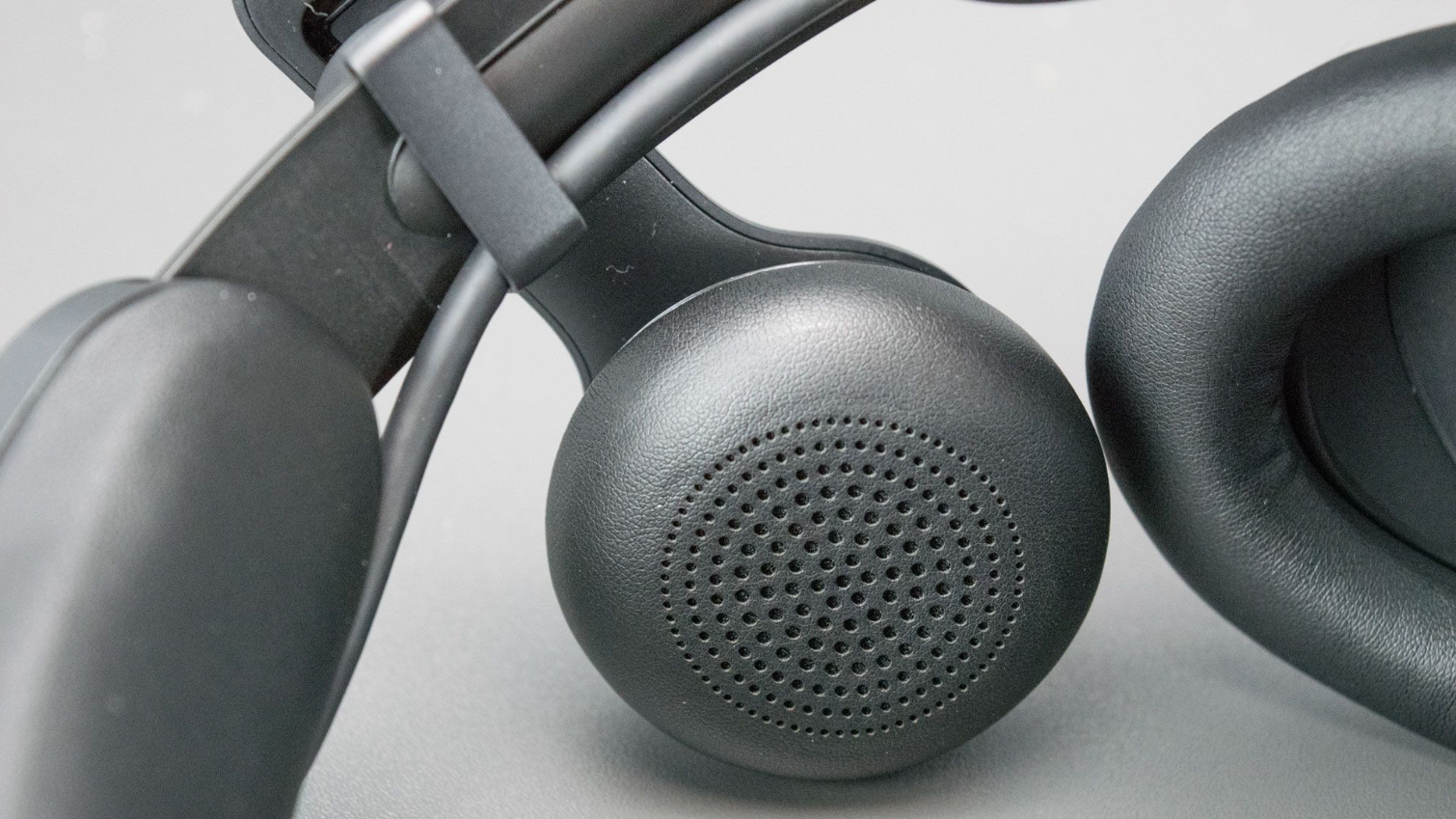
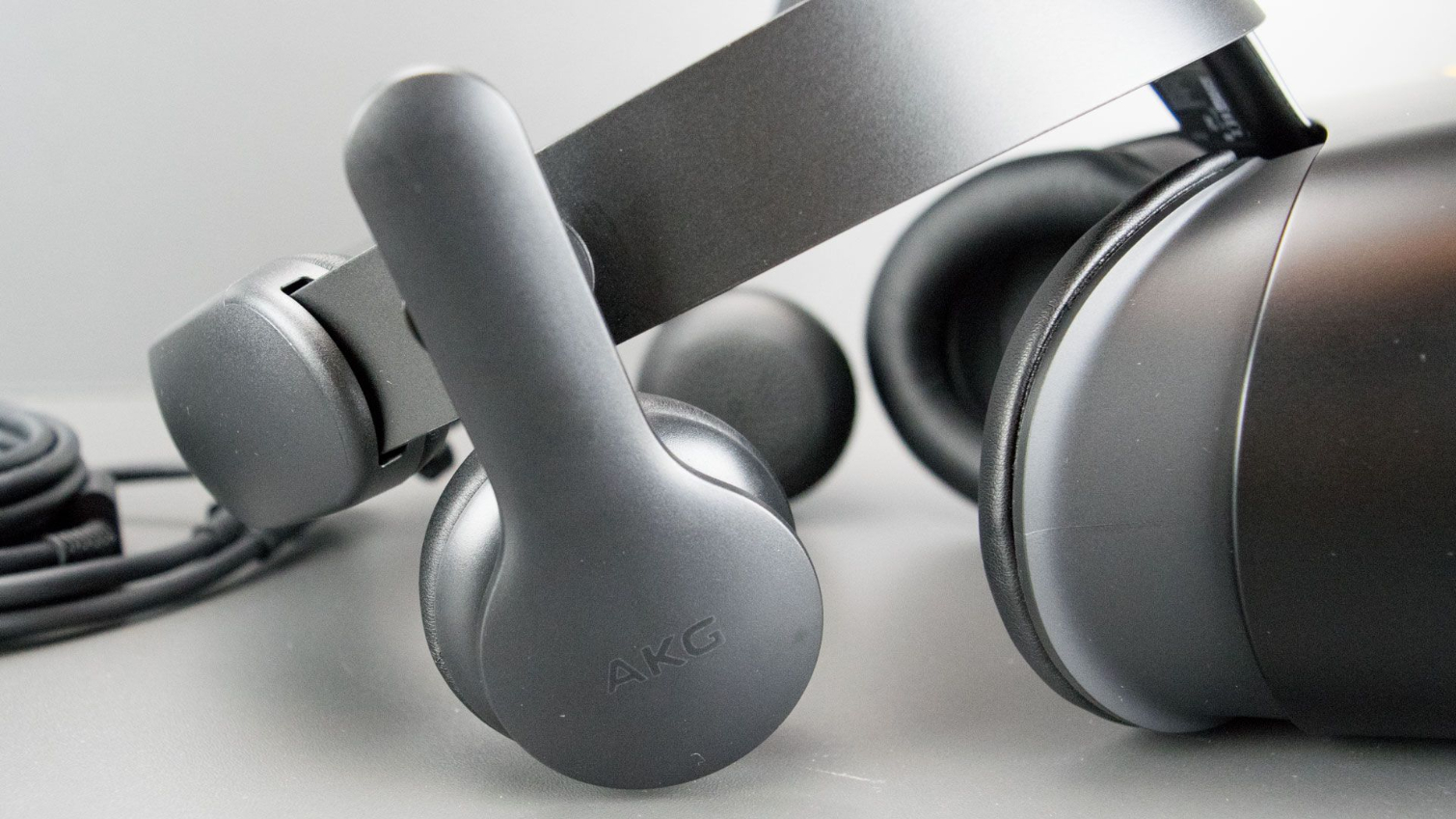
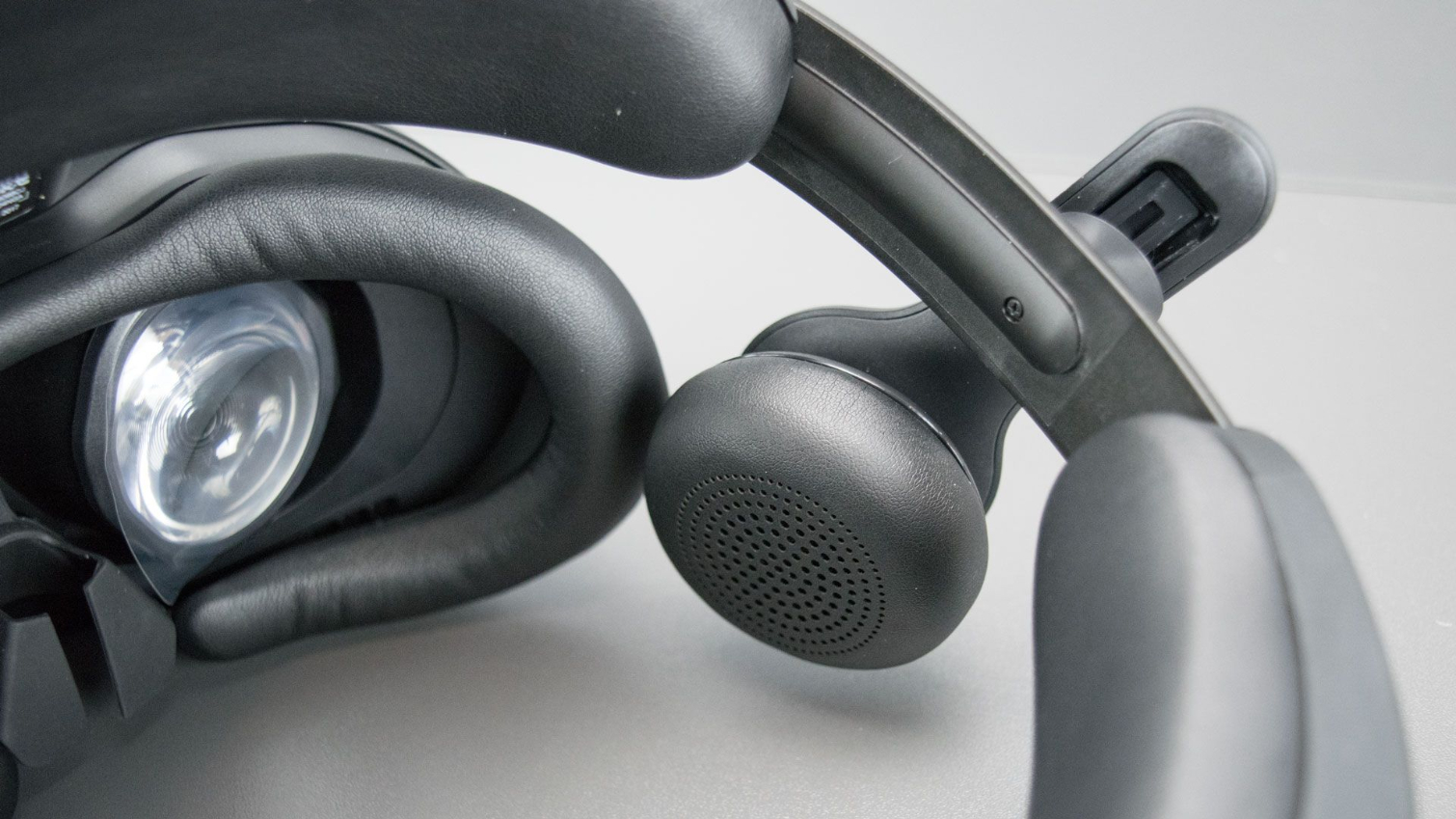
Microsoft’s basic Windows Mixed Reality HMD reference design doesn’t include headphones or a microphone, which is silly given that Cortana is woven into the Windows Mixed Reality platform and requires a certified headset to work properly. Most of Microsoft’s headset partners stuck close to the reference configuration and didn’t include headphones or a microphone. Samsung is seemingly the only Windows MR partner that took audio seriously. It installed not one, but two Cortana-compatible array microphones on the Odyssey, as well as a pair of AKG headphones with 3D spatial audio technology.
The headphones feature multiple adjustment points that should enable a comfortable fit for anyone. You can move the speakers up and down with approximately 15mm of range. You can also swing the headphones forward or back across approximately a 40-degree range. And the headphones are on ball-joint swivels, so they should sit flat across anyone’s ears.
The AKG headphones are only 2.25” in diameter, but they deliver ample volume, and the sound that they produce is crisp and clear. We wouldn’t recommend operating them at full blast unless you want hearing damage. Fortunately, you can adjust the sound levels with the built-in volume controls found on the bottom right of the visor.
MORE: Best Virtual Reality Headsets
MORE: All Virtual Reality Content
MORE: Virtual Reality Basics
Current page: An Introduction To Windows Mixed Reality
Prev Page Meet The Samsung HMD Odyssey Next Page The Samsung HMD Odyssey Motion ControllersKevin Carbotte is a contributing writer for Tom's Hardware who primarily covers VR and AR hardware. He has been writing for us for more than four years.
-
daviddalke I use my glasses all the time with the Odyssey. The are big and Geeky with progressive lenses (+2.25 for farsightedness). Other than a bit of vertical fuzziness at the bottom due to the progressive lens, I have no issues using it.Reply -
daviddalke The article comments that if you wear glasses to move on. I wear my glasses all the time with my Odyssey. The are big and geeky and have +2.5 progressive lenses. Other than a bit of fuzziness at the bottom of the screen due to the my lenses I have a very enjoyable experience with the Odyssey. I hope Microsoft doesn't abandon their MR effort.Reply -
alextheblue "we would still lean toward an HTC Vive with a Deluxe Audio Head Strap for the most complete VR experience"Reply
Why? Is it the inferior Vive controllers? The sweet last-gen outside-in tracking? Displays? The extra $100 for the DAS? When you make a comment like that, it's nice to point out why. -
Evolution2001 Reply
Here's my reason why I prefer the Vive over the Odyssey.20843150 said:"we would still lean toward an HTC Vive with a Deluxe Audio Head Strap for the most complete VR experience"
Why? Is it the inferior Vive controllers? The sweet last-gen outside-in tracking? Displays? The extra $100 for the DAS? When you make a comment like that, it's nice to point out why.
http://www.tomshardware.com/forum/id-3664417/review-samsung-odyssey-htc-vive.html
-
Evolution2001 Reply
Kevin,20841634 said:Samsung HMD Odyssey Windows Mixed Reality Headset Review: MR Goes Premium : Read more
I believe there was a fairly glaring omission from your otherwise thorough review.
WMR requires Bluetooth 4.0. As BT is more prevalent on laptops than desktops, that might be a gotcha when people get their WMR unit, regardless of manufacturer & model.
"Cool! It's finally arrived!".... "Wait, WTF...I need a BT adapter??? GAHHH!"
Here's a couple of tips that I didn't note in my own review from my month+ spent with the Odyssey.
1) Before anyone purchases any WMR device, you should run Microsoft's WMR PC Check tool. It's a free download in MS' App Store. (HERE) If there's any "X" that it calls out as a problem, WMR will not work. Period.
2) This is the BT adapter that MS officially(?) endorses on their website. Link goes to product on Amazon.
3) I found the controller tracking to be very inconsistent with the Odyssey. In your gaming/testing, did you do much movement where the controllers needed to go to the outer stretches of your arms or behind your head (for games such as Space Pirate Trainer and Beat The Blitz)? My controllers with fully juiced batteries would lose sync which really detracts from the total immersion.
Also, you are correct about the battery cover. As I noted in my review, my grip on the controller was dislodging the battery cover.
4) If my understanding is correct, the controllers pair to your BT adapter. This potentially causes signal attenuation if your BT adapter is plugged into a rear USB port or is simply not always in line-of-sight with the controllers.
5) I too found the tether to be too short. So I ended up buying some extension cables which resolved the problem. Be aware, not all extension cables are created equal. For example, a 'standard' USB extension cable does not infer USB 3.0 compatibility. And WMR is very specific if you aren't plugged into a a USB 3.0 port. I thought maybe it was just power delivery, but I was initially using a powered USB 2.0 extension cord. No go. It has to be a USB 3.0-rated extension cable. Same thing with HDMI certifications.
So here's what I recommend for people looking to extend their playing area. (Obviously, I confirm these work with the WMR headsets, specifically the Odyssey)
- 6' HDMI extension cable- USB 3.0 extension cable- Any run of the mill USB 2.0 extension cable so get your BT adapter closer to the play area.
6) Lastly, with regards to the comparison of built-in audio on the Odyssey compared to the lack-of on the Vive... The Vive has the 1/8" headphone tap on it. A solid set of earbuds fill the need nicely. Their cable drapes over the back of your head and are never in the way. So people don't have to resort to placing big, over-the-ear headphones over the Vive's head strap. I will say that the AKGs on the Odyssey do work exceptionally well!
Again, a nice thorough review. I just wanted to help plug what I consider to be a few holes so the readers can avoid a lot of the delays and headaches that I initially dealt with.
And I also agree- especially given the Vive's price drop since the Vive Pro released- the Vive is still the overall HMD winner.
-
therealduckofdeath I don't see how the 6th point you list is a pro for the Vive, Evolution2001? Using ear-buds can be rather fatiguing when used for extended periods, both the fit and the type of sound you get when it's pumped at your ear drum in a tiny closed pressure chamber. They also create a lot more cable noise than any other option.Reply
